
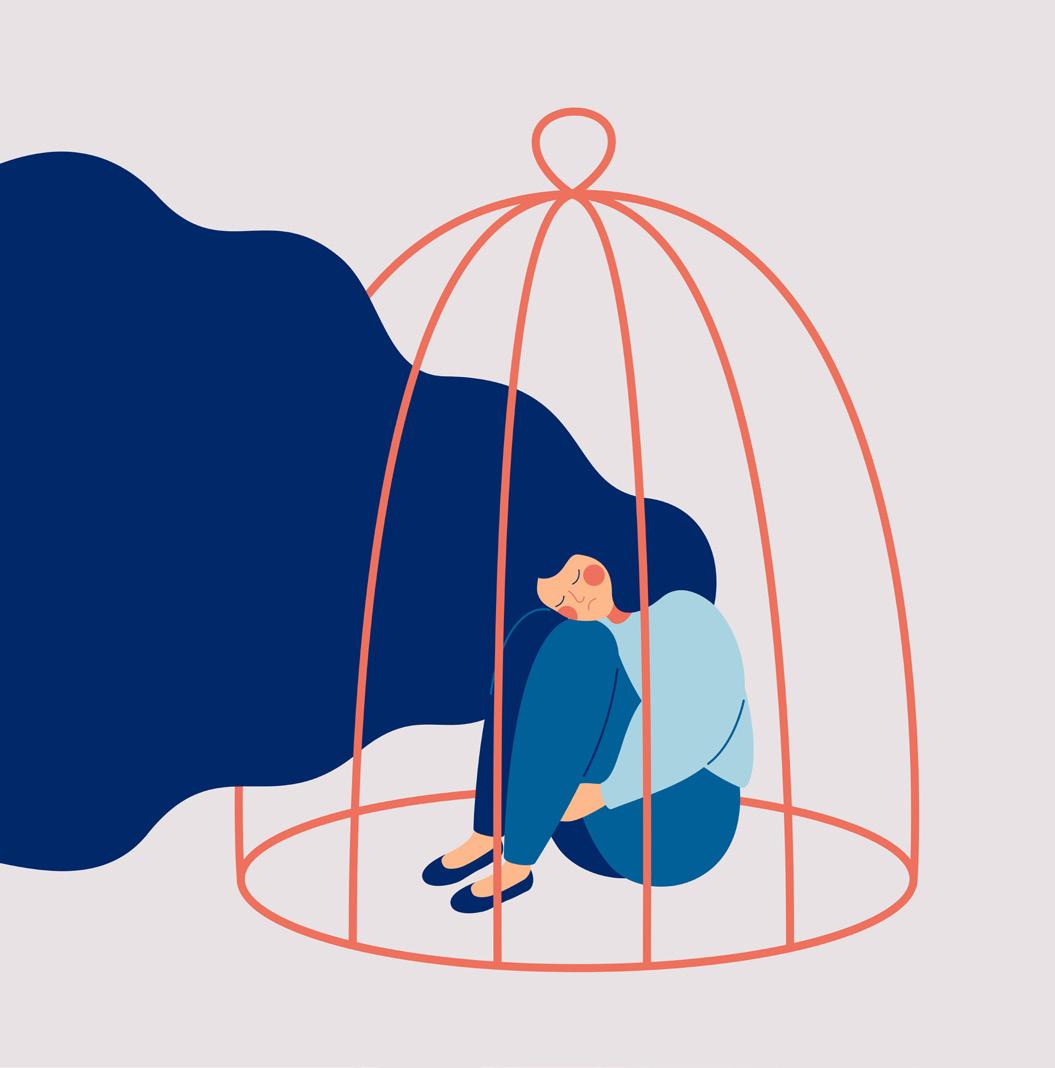




Afull third of American adults take multivitamins, despite prior studies suggesting they do little to boost health.
Now, a study involving almost 400,000 people finds zero benefit from multivitamin use in helping folks live longer.
Among people "without a history of major chronic diseases, we did not find evidence to support improved longevity among healthy adults who regularly take multivitamins," concluded a team led by Erikka Loftfield. She's with the division of cancer epidemiol-

ogy and genetics at the U.S. National Cancer Institute (NCI).
Her team published its findings June 26 in the journal JAMA Network Open.
In the study, Loftfield's group analyzed data from three prospective studies (meaning people were followed over time) with an average 27 years of follow-up.
Over 390,000 healthy adults were enrolled in the studies, and they averaged about 61 years of age upon study entry. Researchers gathered data on the participants' multivitamin use.
Over the nearly three decades of
follow-up, almost 165,000 of the participants died. About 50,000 deaths were attributed to cancer, about 35,000 deaths were caused by heart disease and 9,275 deaths were linked to strokes.
However, Loftfield's group detected no association between multivitamin use and a person's odds of dying within the study period.
In fact, "we found that daily multivitamin use vs nonuse was associated with 4% higher mortality [death] risk," the researchers noted.
People's race, ethnicity, education or dietary quality didn't alter the results.
The NCI team noted that the new findings come on the heels of "several studies that reported no benefit of multivitamin use for reducing risk of cardiovascular disease, cancer or mortality."
In 2020, the U.S. Preventive
Services Task Force, an influential, independent panel of health experts, found "insufficient" evidence to determine whether or not multivitamins could prevent heart disease or cancer.
The message to the public on multivitamins might slowly be getting through: "In the U.S., multivitamin use declined by 6% from 1999 to 2011," Loftfield's group noted.
However, use "remains popular, with nearly 1 in 3 adults reporting recent use," they added.
While the study showed no effect of multivitamins on people's odds for an early death, the team stressed that "we cannot preclude the possibility that daily multivitamin use may be associated with other health outcomes related to aging."

We may not think of loneliness as posing serious health risks, but if feelings of loneliness are not addressed, they can significantly impact our health. There are ways to help prevent loneliness and the resulting health impacts. If you’re feeling lonely, consider the following:
• Seek support: Reach out to friends, family or a therapist. Support groups can also foster a sense of community and understanding.
• Volunteer: Helping others can boost self-esteem and foster meaningful relationships.
• Take up a hobby: Engage in activities that bring you joy. Join a club or group with shared interests to meet new people and build relationships.
• Practice self-care: Maintain a healthy diet, get enough sleep, exercise regularly, and practice mindfulness and self-compassion.
• Try something new: Step outside your comfort zone. It can be intimidating but can also lead to new connections and relationships.
Listen to our episode, “The Loneliness Epidemic” on the Community Check-in to learn more about this issue and who is most at risk.

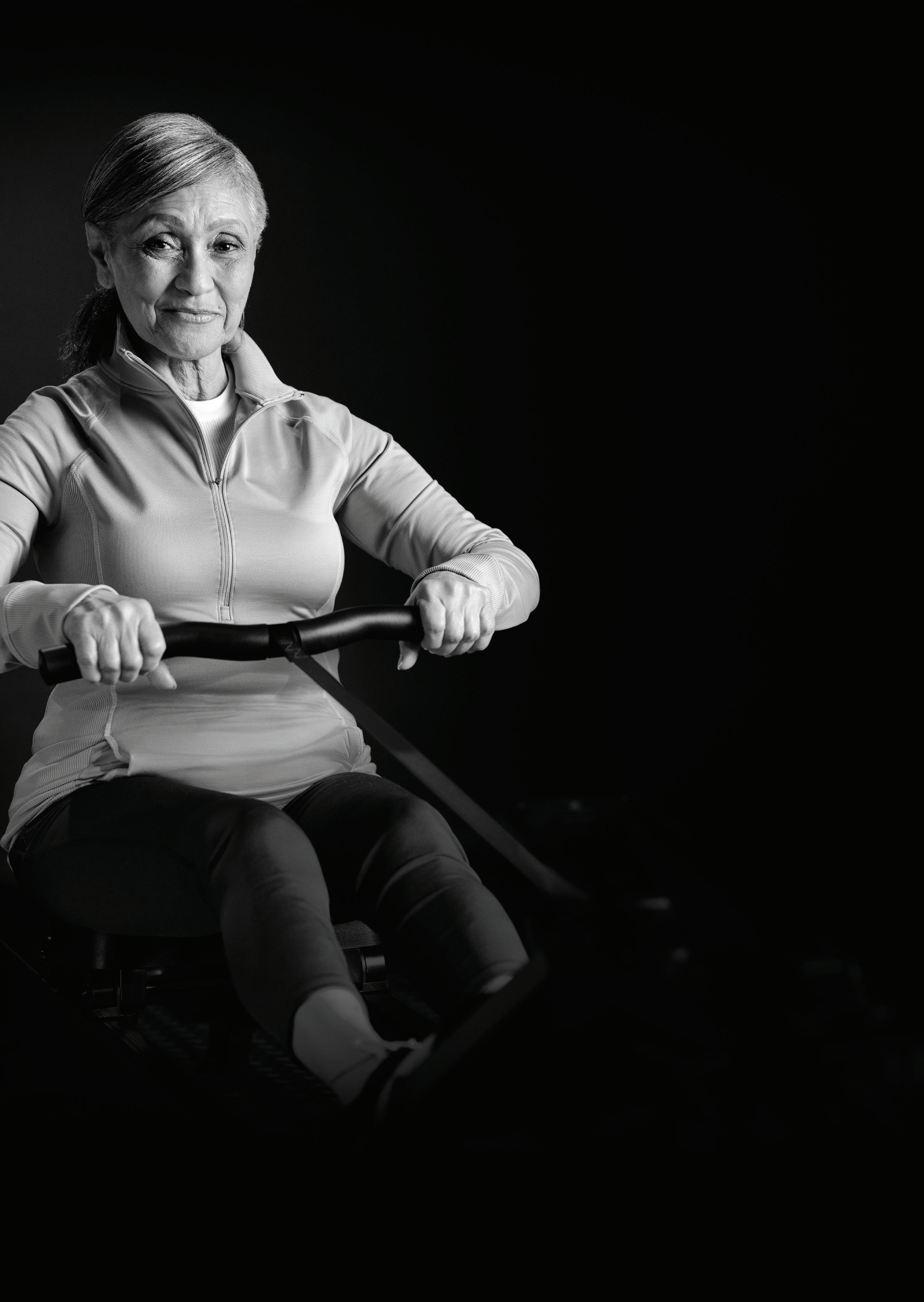
Mounjaro outperforms Ozempic in helping people lose weight, a new study shows.
People taking tirzepatide (Mounjaro, Zepbound) dropped significantly more pounds than those taking semaglutide (Ozempic, Wegovy), researchers reported July 8 in the journal JAMA Internal Medicine.
“Individuals with overweight or obesity treated with tirzepatide were significantly more likely to achieve clinically meaningful weight loss and larger reductions in body weight compared with those treated with semaglutide,” concluded the research team led by physician Nicholas Stucky, vice president of research with Truveta Inc., a medical research collective.
For the study, researchers tracked more than 18,000 overweight and obese people who were prescribed either drug to help control their Type 2 diabetes between May 2022 and September 2023.
Both drugs initially were developed as Type 2 diabetes medications, but were later approved for use in weight loss.
Results show that both drugs are effective in promoting some weight loss. Nearly 82% of patients taking Mounjaro lost 5% or more of their body weight, compared to nearly 67% of those taking Ozempic, researchers found.
However, Mounjaro users were more likely to achieve greater weight gain. About 42% of Mounjaro patients lost 15% or more of their body weight, compared to about 18% of those taking Ozempic.
Overall, patients on Mounjaro were 76% more likely than those on Ozempic to lose 5% or more of their body weight; 2.5 times more likely to lose 10% or more of their body weight; and 3.2 times more likely to lose 15% or more of their body weight, results show.
Mounjaro patients also experienced larger reductions in body weight throughout their first year on the drug, researchers added.
After three months, Mounjaro patients had lost about 6% of their body weight compared to under 4% for Ozempic patients. The difference was 10% versus 6% at six months, and 15% to 8% at one year.
Both drugs work by mimicking the effects of the gut hormone GLP-1, which plays a role in maintaining stable blood sugar levels. This action also slows digestion and increases satiety.
However, Mounjaro also stimulates a second gut hormone called GIP, which might explain the boosted effects found in this study.

By Chris Motola
Highland physician of the year discusses palliative care: ‘We
deal with very sick patients and oftentimes that takes a toll on us,’ she says
Q: I think people tend to associate palliative care with dying, but it's a little broader than that, isn't it?
A: It is a lot broader. The way I explain palliative care is that it's a sub-specialty of medicine like cardiology or pulmonology. But instead of specializing in an organ system, we specialize in the whole person. Specifically, we specialize in helping people with complex symptoms like pain and nausea due to serious illnesses. The other thing we specialize in is helping people navigate complex medical decisions. I often have an elevator speech when I walk into the room, because when people do hear palliative care, they do think of end-of-life, of hospice. There are a lot of doctors saying a lot of things to you because you're very sick. We're the ones who come in and do a medical timeout with you. We sit down, make sure everyone is hearing and understanding each other. And we talk about what the path forward is. So palliative care is really about optimizing quality of life at any stage of illness. End-of-life care is an important part of what we do, but not all of it. All hospice is palliative care, but not all palliative care is hospice.
Q: What types of illnesses are we typ ically talking about with palliative care?
A: I think the most com mon two are cancer and de mentia. Those are the two most common, progres sive terminal illnesses that people live with and for which pallia tive care is appropri ate. Some other ones are COPD, congestive heart failure and some neurological diseas es like Parkinson's or ALS. So any disease that progresses and causes complex symptoms in your life that greatly affect your quality of life or any disease that may eventually become terminal.
Q: What are some of the more chal lenging aspects to running this program?
A: Lots of challenges. But I do think in our culture there's a lot of stigma around death and dying. So the first challenge is getting through the door and not being scared
of why you're in the room. The other part of that is that we're the doctors other doctors call to give bad news. We deal with very sick patients and oftentimes that takes a toll on us. That's something that, as a director, I really need to be cognizant of.
Q: What strategies do you have for dealing with physician burnout?
A: We are a close-knit group and focus on checking in with each other. We oftentimes take turns seeing patients who may be very difficult emotionally, like a young mom with little kids who is dying of cancer. We try to make sure no one physician is getting too many of those cases. So those are just some things. I also try to make sure we're getting retreats that focus on wellness.
Q: You were recently recognized by Highland Hospital as Physician of the Year.
A: It's a great honor. It totally blew me away. Every year they seek nominations from all of the faculty and staff at the hospital, so it's kind of a write-in process. You nominate someone and give reasons why they should receive the reward. Many
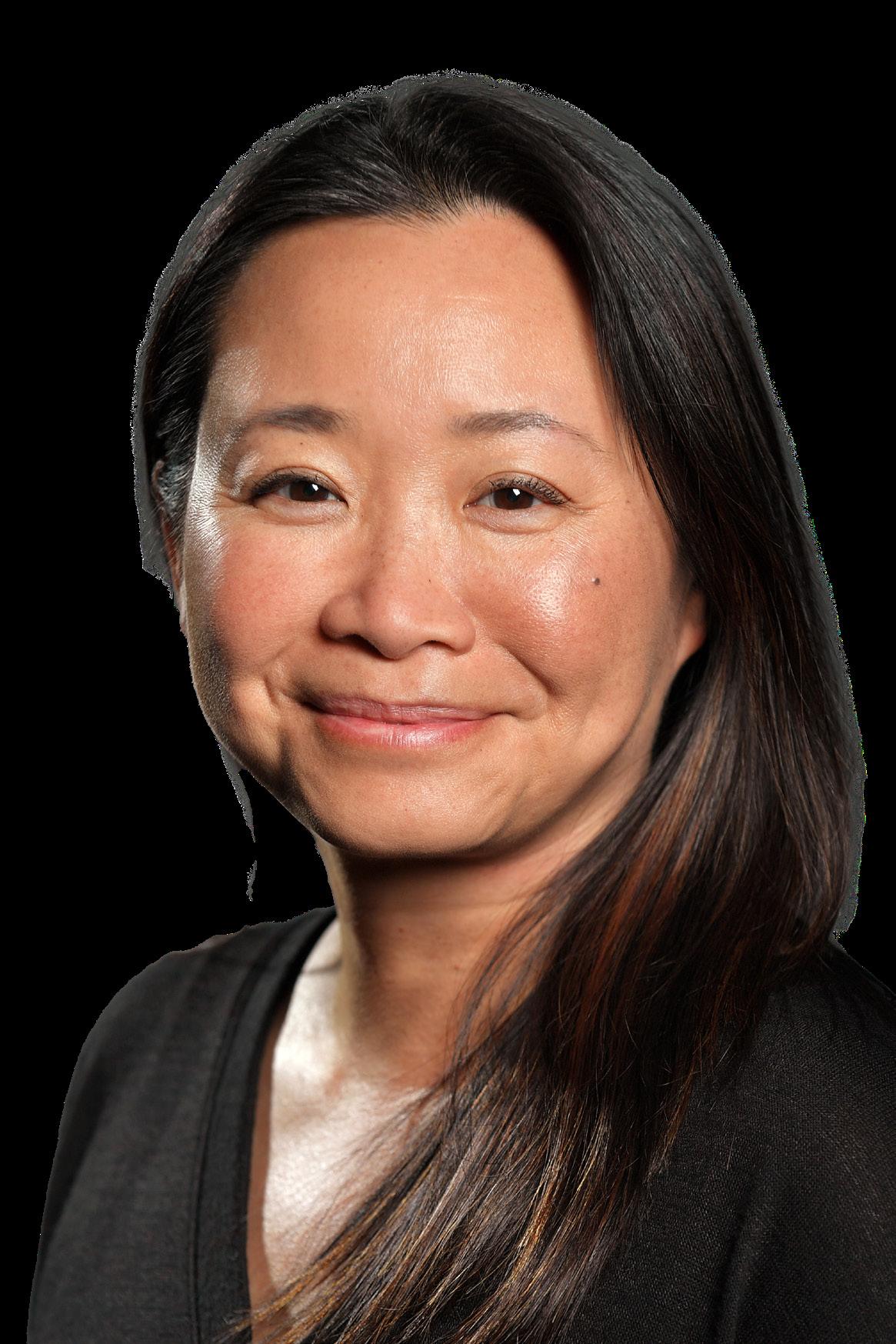
‘Palliative care programs don't make hospitals money. We don't cut people open. We don't have sexy machines. Our superpower is time, patience and compassion.’
Q: How much of your duties are clinical versus administrative?
A: Most of it is clinical. Most of the time, I'm seeing patients at Highland Hospital. I'd say about 20% of my work is administrative.
Q: What got you interested in palliative care?
A: I trained in internal medicine and my first job was as a hospitalist. But I found that the most meaningful work to me was when I was able to sit down at the bedside and hear a patient's story. And to help them decide which medical interventions made sense within the context of his or her own story. And that's what palliative care providers do every day. We collect patients' values and help translate them into goals and interventions. So it was out of practice that I decided that this was really what I wanted to do, that this is what being a doctor was all about. It's not about how many discharges I could do in a day or how many antibiotics I prescribed. It was about helping this human make medical decisions according to their values. Especially in the face of death and dying — or a very serious illness.
Q: Does that make palliative care one of the hard specialties to quantify, to find metrics for it?
A: Yes, absolutely. The reality is that palliative care programs don't make hospitals money. We don't cut people open. We don't have sexy machines. Our superpower is time, patience and compassion. And our healthcare system doesn't incentivize thoughtful medicine. Metrics for palliative care is very tricky, because if you judge us by volume or use, we would not being doing very well at all. So it is very hard to quantify.
Name: Chin-Lin Ching, M.D.
Position: Medical director of the palliative care division at Highland Hospital
Hometown: Niskayuna, Schenectady County
Education: University of Rochester School of Medicine
Affiliations: Highland Hospital; URMC system
Organizations: American Academy of Hospice and Palliative Medicine; Center to Advance Palliative Care
Family: Husband (a radiologist), two children (8 and 11)
Hobbies: All things food and wine

It shows loneliness is worse for young Americans than older ones
Loneliness strikes more than a fifth of people worldwide, a new survey warns.
In the Gallup survey published in July, 23 percent of people said they felt lonely "a lot of the previous day." Those experiencing feelings of loneliness often felt physical pain, worry, sadness, stress and anger, as well. Beyond its emotional toll, lone-
vulnerable and open up to share," she explained.
The survey also showed loneliness was worse for young Americans than older ones.
"It's really unfortunate that as much as we want our children to succeed, the emphasis I feel is being put on academic achievement. And for kids, they're looking at financial

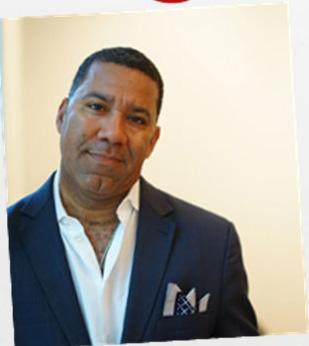

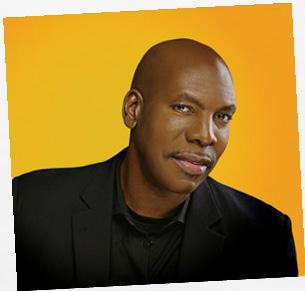
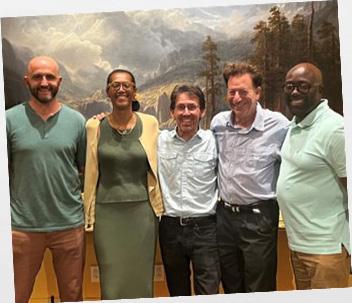

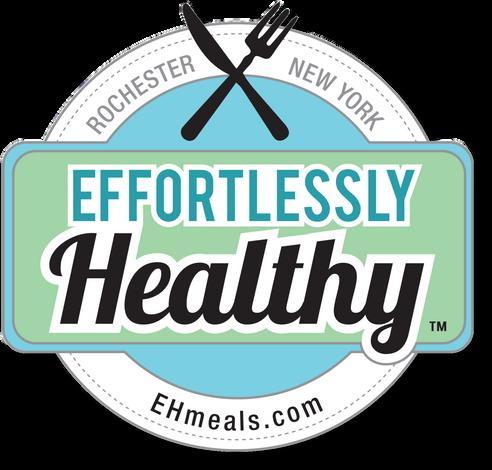

© 2024 by Local News, Inc. All rights reserved. P.O. Box 525, Victor NY 14564. Phone: 585-421-8109 • Email: Editor@GVhealthnews.com
Editor & Publisher: Wagner Dotto • Writers: Deborah J. Sergeant, Chris Motola, George Chapman, Gwenn Voelcker, Anne Palumbo, Jim Miller, Jennifer Faringer, Mark Winsberg (MD), Mike Costanza, Kristie Pfaff, Jennifer Aline Graham
Advertising: Anne Westcott (585-421-8109) • Linda Covington (585-750-7051)
Layout & Design: Angel Campos–Toro • Office Secretary Allison Lockwood
No material may be reproduced in whole or in part from this publication without the express written permission of the publisher. The information in this publication is intended to complement—not to take the place of—the recommendations of your health provider. Consult your physician before making major changes in your lifestyle or health care regimen.
August




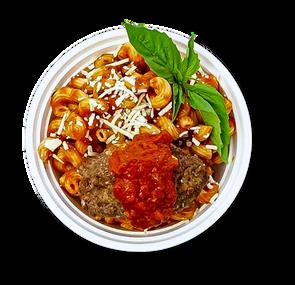



By George W. Chapman

The recent ruling limiting the authority of federal agencies like the EPA, Consumer Protection Agency, Education and the Department of Health and Human Services to promulgate regulations broadly intended to protect consumers will have untold consequences on our healthcare system. The court overturned a 40-year precedent that gave deference to federal agencies over legal challenges to their regulatory au-
As of 2022, we rank 11th in the World Index of Healthcare. We were ranked sixth previously. Our decent, but not great, ranking out of 32 advanced countries was bolstered by our high performance in research and innovation and in our biotech industry. That's the "good" news. Not surprisingly, we are dead last in fiscal sustainability. Our cost of care per capita is nearly twice the average cost of the other 31 countries. Surely, after spending so much, we must rank high on quality. Nope. We rank 19th in quality. Good to know we are getting a good bang for our buck.
A recent poll of 3,300 people older than 50, conducted by the University of Michigan, found that the top three concerns about

thority or decisions based on science. The court has basically deemed itself the expert on everything; the court can now second guess what Congress intended when drafting a law presumably to protect consumers. Basically, this ruling allows every special interest group like hospitals, insurers, equipment and drug manufacturers, to challenge regulations not specified in law. The drug cartel, er industry, is already working hard to reverse the
health were the cost of care overall, the cost of long-term care and the cost of drugs. Also in the top 10 concerns were the cost of insurance, the cost of oral care, financial scams and fraud. Is there an overriding theme here? Considering the recent Supreme Court decision, addressed above, costs could actually get worse if special interest groups like the pharmaceutical manufacturers can challenge cost control regs that are not rooted in law.
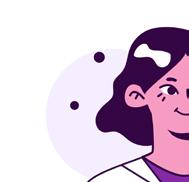

law requiring them to finally negotiate drug prices with Medicare. It was to go into effect in 2026. So CMS (Medicare) and the FDA will have to be far more cautious when drafting regulations. Consumers, providers and healthcare systems can expect more uncertainty and confusion and less stability in our already uncertain, confusing and unstable healthcare system.
pacted hospitals and local businesses. Medical students are declining residencies in states with strict abortion laws. Idaho lawmakers remain unphased. Ironically, the Supreme Court interceded, ruling Idaho must allow abortions in medical emergencies per the Emergency Medical Treatment and Labor Act.
Lucky us. Proponents of DTC ads (besides the drug companies) argue it's all about consumer education. Why should drug info only come from your doctor? Gee, I don't know. Opponents of DTC ads argue it has increased costs, addiction and off label use —Ozempic for weight loss, for example. Drug manufacturers spend more than $8 billion annually on TV ads. Three of the top five TV advertisers are drug companies. P&G and Disney the other two.
The retail giant plans to close 25% of its stores over the next three years. Walgreens does $27 billion a year, but has lost $5.6 billion through the nine months ending May 2024. Staff and buildings are expensive. It's far more profitable to sell drugs online. Walgreens actually attributes recent losses on seniors (who can barely afford their scripts) cutting back on dosages (I'm not kidding) and to overly aggressive pharmacy benefit managers who negotiate lower prices for employers. (PBMs are a whole different story when it comes to shady pricing and "savings'' for consumers.) Walgreens will also reduce its stake in the unprofitable clinic chain Village MD. Beating Walgreens to the punch is CVS, which just filed a patent to sell drugs in the metaverse via online stores.
The mask on–mask off saga continues. De pending on where you live, the CDC has relaxed indoor masking standards, schools included, for the 70% of communities with low to medium COVID levels. Over half of counties has low to medium COVID levels. Masks are still recommended for communities with medium to high levels. COVID data is collected and reported daily by 6,000 hospitals. If you test positive or are symptomatic, masking guidance is unchanged. Hospitals may have masking policies in place. Both the AMA and AHA urge indoor masking. Currently, 65% of us are fully vaccinated, but patience with masking is wearing thin. Some states have lifted mandates and schools are feeling the pressure to get rid of masks. The guidance for masks in schools has been in place for three years. The Supreme Court has upheld vaccine requirements for healthcare workers in facilities that participate in Medicare or Medicaid.


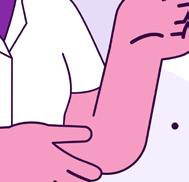

States with strict abortion laws that criminalize abor tion, case in point Idaho, are experi encing an exodus of this specialty. In the last year, Idaho has lost almost a quar ter of its OB-GYNs. The departure of these physicians was felt first and hardest in rural underserved areas. The departure of physicians has im-

Seen enough of them? It wasn't always this bad. Forty years ago, the FDA allowed drug ads on TV if they were the same boring ads as for physicians. But in 1997, the FDA allowed direct-to-consumer (DTC) drug ads. (That's when all hell broke loose with happy people dancing poorly to terrible awful music to sell drugs.) The American Medical As sociation (AMA) actually lobbied to prevent DTC ads back in the ‘80s. TV drug ads are banned in every coun try except the US and New Zealand.

George W. Chapman is a healthcare business consultant who works exclusively with physicians, hospitals and healthcare organizations. He operates GW Chapman Consulting based in Syracuse. Email him at gwc@gwchapmanconsulting.com.
From paddleboarding to sailing, the Finger Lakes region is perfect for staying fit — no matter your age!
By Jennifer Aline Graham

There’s no better place to stay active, healthy and mentally fit than in the stunning Finger Lakes region. Whether spending time dockside or wading in the water, the region is the ideal place to not only escape with family for a long weekend, but also to venture to when focusing on your own health and well-being.
When you’ve already experienced so many wonderful things and made so many memories during your lifetime, it’s only fair to continue making memories in a relaxing, beautiful environment.
And what’s more relaxing and beautiful than staying fit on a Finger Lake?
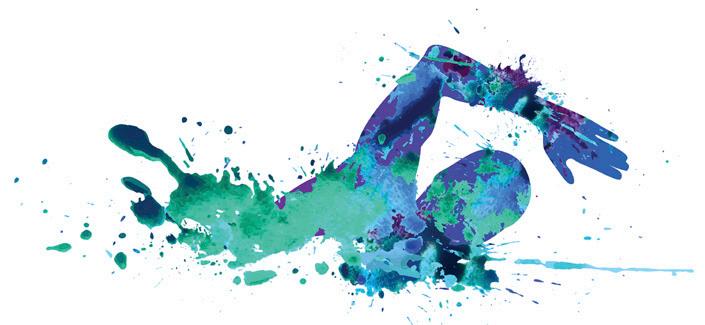
Whether at Canandaigua, Keuka or Seneca lake, in a nearby pool or at the local gym, swimming is just as energizing as the next water sport or lakeside activity.
Swimming doesn’t have to be some basic activity — as the younger generations may say — just because it’s been a popular hobby and sport for many years.
It is an absolutely terrific activity to squeeze into your daily routine — especially if it’s happening at a lake!
Swimming can bring so many physical and mental benefits to the body and mind. Some of these benefits are:
• Less strain on your joints due to the reduction of gravity
• Provides mental and emotional clarity.
• Less pressure on certain parts of your body such as your hips,
knees and spine.
• Necessary self-care time to focus on clearing your mind and setting your body at ease.
Whether wading in the lake or working on your go-to stroke, spending time in the water is an activity to add to your spring, summer and fall. fitness regimen.


Though kayaking has been a popular lakeside hobby for many years, it doesn’t mean it isn’t just as thrilling as the next new activity. The thrill of exploring nature while gliding atop the water is a feeling like no other. The Finger Lakes region is filled with kayaking clubs, meet-ups and events where individuals of all ages can connect and kayak. There are many reasons this activity has remained so popular over the years:
• Enjoyable physical activity for all ages.
• Helps relax the brain and body.
• Improves coordination and balance.
• Supports cardiovascular health and wellness.
Connect with groups on social media, check out the local community center or reach out to locals in the town you’re staying in to see if and when kayaking clubs are getting together near you.
Take a sailing course
Sailing is no joke. This activity takes a lot of perseverance, focus and energy and is absolutely worth all of those dynamics and more. The
feeling of satisfaction your mind and body receives when you gain that balance on the water and let the sails take to the wind is a freedom like no other.
Some reasons sailing on the Finger Lakes is an activity to partake in are:
• Improves cognitive stimulation and focus.
• Deeper connection with nature.
• Reduces stress and anxiety being active on the water.
• Helps you learn and conquer new skills.
Sailing isn’t just an activity for you do alone. Your grandchildren will love learning from you and tagging along on your sailing adventure across the Finger Lakes.

Stand-up paddleboarding isn’t just for the zoomers and millennials. It’s also a great physical — and social — activity for the older generation to take a chance at and conquer. Though it may seem like paddleboarding popped back into the mainstream over the last decade, it is actually something that has been around for more than 3,000 years — originating in Peru. It has become a more normalized activity on the Finger Lakes and the reasons are evident:
• Improves balance and coordination.
• Provides growth of confidence and self-esteem.
• Lowers the risk of Alzheimer’s and memory loss.
• Supports cardiovascular health. Why not try something new this summer and fall? Go snag a paddleboard, snag a friend and try out a paddleboard class.
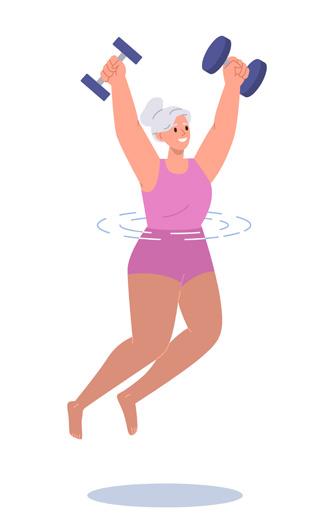
Whether you call it water aerobics, aquatic fitness or Silver Sneakers, one thing is for sure — it’s making a comeback. Or, to be honest, it may have never really disappeared in the first place.
Water aerobics is a way to stay fit and have fun while spending time in the water. There are many classes available to seniors on the Finger Lakes and all you have to do is find them, sign up and prepare to have a great time. There are reasons why water aerobics has continued to stay at the top of the list of favorite fitness activities to take part in when visiting a lake:
• Great cardiovascular exercise.
• Lessens pressure on joints.
• Improves range-of-motion.
• Boosts mental health.
When you want to stay active while having fun out in nature, try a water aerobics class in one of the Finger Lakes. You’ll find yourself feeling more energized and confident afterward.
By Gwenn Voelckers
Asteady rain was falling. It was one of those dreary Rochester days that made me want to pull up the covers and stay in bed.
As I struggled to start my day, I couldn’t help but recall the daunting journey I embarked on after my divorce.
I felt lost and alone in my search for purpose and meaning in my new solo life.
If you are living alone after a divorce or the loss of a spouse or partner, the newfound solitude in a quiet home can feel empty and overwhelming.
But it doesn’t have to.
When I found myself in this situation, I got professional help and was reminded of the transformational power of a positive outlook and acting decisively to create a better life.
Drawing on those insights, I followed a three-step approach for personal growth and happiness. It has worked for me, and I continue to work this plan when life’s challenges seem insurmountable.
Perhaps you, too, will find this approach helpful in trying times.
STEP ONE: Put it all out there
Take a deep breath and list your worst fears, self-doubts, and negative inner thoughts that keep you up at night. Be honest with yourself — it’s OK to acknowledge the dark thoughts that haunt you.
Here are some examples to get you started:
• I feel guilty for not being able to save my marriage.
• I worry my kids won’t want to be around me anymore.
• I feel worthless and unlovable.
• I worry about my health deteriorating and having no one to care for me.
• I fear never finding love again. Or joy.
• I believe I’m too old to start over.
• I am ashamed of my current situation.
• I feel overwhelmed by loneliness.
• I’m convinced that my life has no purpose.
• I fear dying alone, miserable and penniless.


'By
peace.'
• I’m terrified of the unknown future.
It’s easy to get stuck in this quagmire of negativity, but know that you’re not alone. Recognizing and articulating your negative thoughts is the first step towards liberation.
STEP TWO: Envision a better future
Next, ask yourself, “How do I want to feel six months from now?” Envision the future you desire, and identify the emotions you want to experience. What kind of person do you want to become?
Here are some sample goals to inspire you:
• More connected with friends and loved ones.
• More confident and courageous.
• Proud of the example I’m setting for my children.
• Filled with hope and optimism.
• Empowered to make decisions and take control of my life.
• Healthier and more energetic.
• Less weighed down by guilt or regret.
• At peace with my past and present.
• More forgiving of myself and others
• Capable of handling challenges and bouncing back from setbacks.
• More comfortable and content in my own company.
A simple shift in attitude can be incredibly empowering. By focusing on what you want to achieve, you begin to move away from self-deprecation and toward self-worth.
STEP THREE: Take action toward your goals
Lastly, ask yourself, “What concrete actions can I take today to move closer to my six-month goals?” It might be as simple as:
• Connecting with support groups for people in similar situations.
• Seeking professional counseling or therapy.
• Spending more time with friends or family.
• Engaging in self-care practices like prayer, meditation or journaling.
• Exploring new hobbies or deepening an existing passion.
• Volunteering or participating in community activities.
• Seeking financial or career guidance to alleviate monetary worries.
• Prioritizing physical health and fitness.
• Practicing gratitude and mindfulness.
• Enjoying “me time” on an overnight solo retreat.
Now, remind yourself that progress is not a destination – it’s a journey. Living alone after a significant life change can be overwhelming, but it’s important to remember that it’s never too late to pursue a more fulfilling existence.
By acknowledging your negative thoughts, visualizing a brighter future, and taking action toward your goals, you can feel more content, more confident, and more at peace. The secret to transformation is already inside you. Embrace it, and watch your life change for the better.
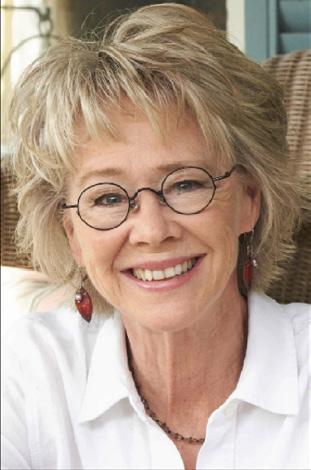
Gwenn Voelckers is the author of “Alone and Content: Inspiring, empowering essays to help divorced and widowed women feel whole and complete on their own.” She welcomes your thoughts on this column as well as topic suggestion for future essays at gvoelckers@rochester. rr.com.





















Night shift work can increase a person's risk of chronic disease, and a new study reveals one possible explanation for this.
It appears that just a few days on a night shift schedule throws off body rhythms tied to regulation of blood sugar, energy burning and inflammation, researchers found.
“There are processes tied to the master biological clock in our brain that are saying that day is day and night is night and other processes that follow rhythms set elsewhere in the body that say night is day and day is night,” explained senior study author Hans Van Dongen, director of the Sleep and Performance Research Center at Washington State University.
“When internal rhythms are dysregulated, you have this enduring stress in your system that we believe has long-term health consequences,” Van Dongen said in a university news release.

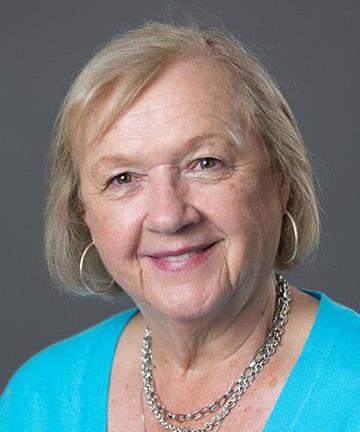

Night shift workers have a higher risk of serious health problems like heart attack, diabetes, metabolic syndrome and cancer, Harvard Medical School says.
For the study, researchers performed a controlled laboratory experiment involving volunteers who were put on simulated night or day shift schedules for three days.
Following their last shift, the participants were kept awake for 24 hours under constant conditions to measure their internal biological rhythms, researchers said.
Blood samples drawn during the 24-hour period revealed proteins present in immune cells closely tied to the master biological clock that keeps the body on a 24-hour rhythm, researchers said.
The master clock is resilient to altered shift schedules, so those protein rhythms didn't change much in response to the night shift schedule.
However, many other proteins
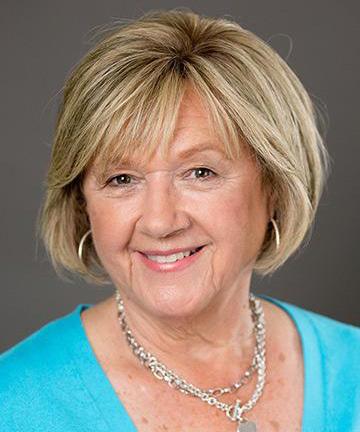
had rhythms that changed substantially in night shift workers, researchers found.
There was a nearly complete reversal in the rhythms of proteins that manage blood sugar, researchers found.
In addition, the processes involved in insulin production and sensitivity were no longer synchronized in night shift workers.
This effect might be happening because the body is trying to undo
blood sugar changes triggered by a night shift schedule, researchers said. It might be a healthy response in the moment, but over time poorly regulated blood sugar levels can damage cells and organs.
The researchers next plan to study real-world workers, to see if the results of their lab experiment occur during regular night shift work.
The new study was published recently in the Journal of Proteome Research.
It is a neurodevelopmental condition affecting communication, social skills, and behavior. Symptoms can vary with some individuals excelling in specific areas while facing challenges in others. The Centers for Disease Control estimates 1 in 36 children in the U.S. is diagnosed with Autism Spectrum Disorder (ASD) Join Mary Cariola Center in spreading awareness and fostering understanding. Empower yourself and our community with knowledge!



By Jennifer Faringer
Addiction is a brain disease rather than simply a “bad behavior” and treating it involves so much more than just “say no” media campaigns of the past suggest.
The American Society of Addiction Medicine defines addiction as “a treatable, chronic medical disease involving complex interactions among brain circuits, genetics, the environments, and an individual’s life experiences. People with addiction use substances or engage in behaviors that become compulsive and often continue despite harmful consequences. Prevention efforts and treatment approaches for addiction are generally as successful as those for other chronic diseases.”
young people impacted by addiction.
The National Council on Alcoholism and Drug Dependence – Rochester Area (NCADD-RA) is working to erase stigma and make it possible for individuals struggling with addictions and those impacted by the addiction of their loved ones to get help and support in a variety of ways.
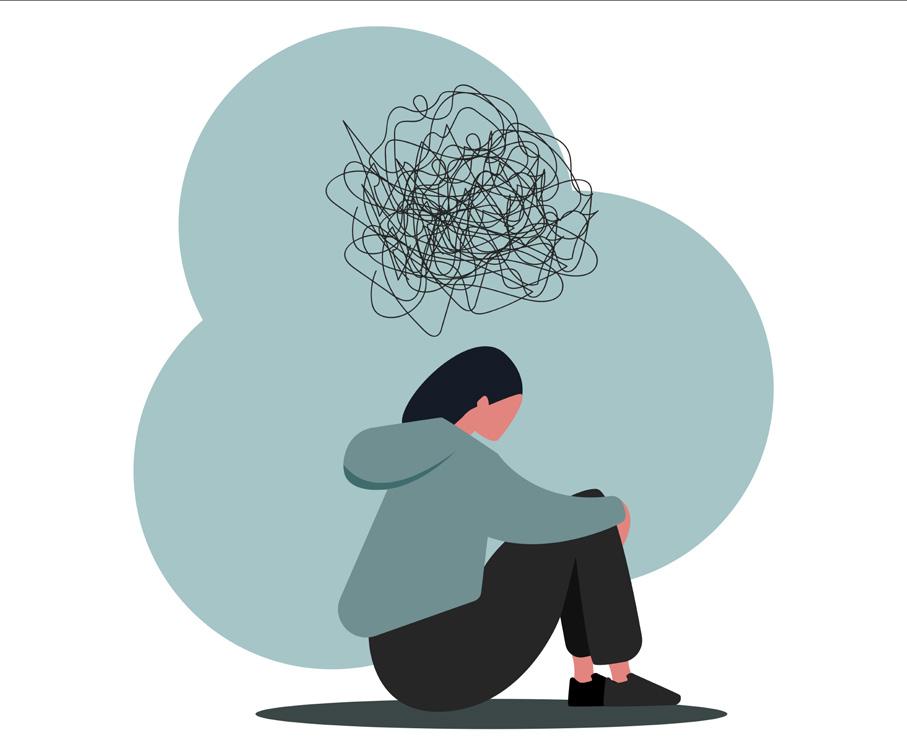
affected will seek help by having important conversations and eliminating the use of stigmatizing language.
The long-standing total approach family program offers education and support groups for parents and youth, helping them to understand the nature of the disease, reassuring them that they are not alone, and fostering a healthy family system. Additionally, NCADD-RA offers Triple P (positive parenting program) parent discussion groups. Triple P is offered in both Spanish and English, for parents or adult caregivers. More information may be found at: https://ncadd-ra.org/services/total-approach-family-program.
'Fostering a culture of prevention and celebrating a climate of recovery begins by ensuring individuals and families seeking support are treated as promptly and respectfully as patients who are seeking help for diseases like diabetes, heart disease and others.'
Yet addiction and those impacted by addiction continue to be stigmatized. Stigma is labeling people as disgraceful or unworthy secondary to a perceived flaw or negative characteristic. Stigma results in shame for the individual and for their families. Shame becomes a barrier that prevents one from seeking help, support, resources and treatment. We can increase the likelihood that those
Fostering a culture of prevention and celebrating a climate of recovery begins by ensuring individuals and families seeking support are treated as promptly and respectfully as patients who are seeking help for diseases like diabetes, heart disease and others. Research shows that a successful approach must include an emphasis on proactively providing prevention education and support services at both the community and school-based levels for families and

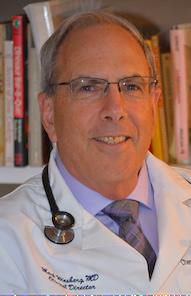
Dr. Mark Winsberg, MD, is here to guide you every step of the way. With 15 years of experience as an Addiction Medicine Specialist and dual board certification in Addiction Medicine and Family Medicine, Dr. Winsberg offers expert care and unwavering support.
Dr. Winsberg provides discrete, nonjudgmental, personalized care and is available not only for individual consultations, but is also willing to speak to community organizations addressing the myriad complexities of this disease. Let’s take the first step toward a brighter future together.

NCADD-RA developed and maintains a variety of treatment provider directories as well as a Directory of Services for Monroe County and Genesee/Orleans/Wyoming counties, Livingston/Ontario/Yates counties, and Seneca and Wayne counties. Treatment directories include names of agencies, points of contact, websites, addresses, levels of care, insurance accepted and much more. Recovery directories include a description of services and activities provided by groups who support individuals at any stage of recovery through sober communities.
Monroe County resources may be found at: https://ncadd-ra.org/ resources.
Additional resources may be found at the Finger Lakes Addiction Resource Center at https://ncadd-ra. org/services/finger-lakes-addiction-resource-center.
NCADD-RA reaches out to the community through education, community awareness, health and resource fairs, encouraging safe disposal of unwanted medications,
providing safe disposal pouches and medication lock boxes, as well as fentanyl test strips and Narcan.
To learn more about addiction-related topics visit our website at www. ncadd-ra.org/resources/awareness campaigns.
To request a community presentation on a variety of addiction-related topics visit https://ncadd-ra.org/ services/community-presentations.
Working together we can truly foster a culture of prevention and celebrate a climate of recovery in our community!

Jennifer Faringer, CPP-G (credentialed prevention professional—gambling), is the director of the National Council on Alcoholism and Drug Dependence — Rochester Area.



By Mark Winsberg, MD
Bill and Bob, the Wall Street stockbroker and the colorectal surgeon —founders of Alcoholics Anonymous — called alcoholism a “cunning, baffling and powerful” disease.
Before they met each other they each were about to give up on themselves as hopeless drunks destined to die from their drinking.
As an addiction medicine specialist for the last 15 years, as well as a person in recovery for over 21 years, I’ve developed a deep appreciation for their stark characterization of the disease of addiction. I’ve also developed the hope and confidence that most people, who at some point in their lives experience this disease, will get better.
Breaking the cycle of addiction is a complex and challenging process that is often oversimplified by people who don’t fully understand the nature of addiction. Addiction is frequently referred to as "the disease of more" and a “disease of isolation”. There are two main characteristics that make it particularly difficult for individuals to break free from its grip: denial and incessant craving.
Denial is a powerful defense mechanism that allows individuals with addiction to avoid facing the reality of their situation. Many people struggling with addiction are unable or unwilling to admit that they have a problem, even in the face of overwhelming evidence. This denial can
be fueled by shame, fear or a lack of understanding about the nature of addiction. Society's tendency to stigmatize and shame individuals with addiction only serves to reinforce this denial, making it even harder for people to seek help.
The incessant craving that accompanies addiction is another major impediment to breaking the cycle.
The brain chemistry of someone with an addiction has been altered by repeated substance use, leading to intense cravings that can be almost impossible to resist. These cravings can override rational thought and lead individuals to continue using substances despite knowing the negative physical, mental, and social consequences.
Society's failure to recognize addiction as a disease further complicates the process of breaking free from addiction. Instead of viewing addiction as a medical condition that requires treatment and support, many people see it as a moral failing or a lack of willpower. This attitude can prevent individuals with addiction from seeking help and can make them feel even more isolated and hopeless.
It is difficult to predict why, how or when an individual with addiction will reach a point where they are ready to accept help. Each person's journey to recovery is unique, and what works for one person may not work for another. However, recon-
By Deborah Jeanne Sergeant
Entering a drug rehabilitation program represents an important step toward sobriety. However, the patient still has a lot of work yet to do.
To make this process easier, friends and family can show their support.
“One of the first things the family can do is be patient and recognize this is a stage in their journey,” said Jason Teller director of the Gregory E. Polisseni Living Hope Treatment Center, an in patient program operated by Villa of Hope in Rochester where patients typically stay three to seven days. “The process of recovery is similar to any other illness with its own challenges, relapses, struggles and successes.”
Simply viewing “going to rehab” as the solution to the problem, it’s more realistic to see it as a step towards wellness. Teller advises family members to ask their loved one if they can be part of it.
Expressing support verbally when they’re permitted to call (or visit, if it’s a longer-term stay) can also make a huge difference.

nection through various forms of help — such as inpatient or outpatient addiction treatment, therapy, support groups and medication-assisted treatment — can provide the groundwork for prolonged sobriety and recovery.
Through these forms of support, individuals with addiction can begin to address the underlying issues that may have contributed to their addic tion, such as trauma, mental health disorders, or a lack of coping skills. They can also build a strong support network of people who understand what they are going through and can offer encouragement and guidance along the way.
Breaking the cycle of addiction is a challenging process, but it is possible with the right support and resources. By recognizing addiction as a disease, offering compassion
and understanding to those struggling with it, and providing access to evidence-based treatment options, we can help more individuals break free from the grip of addiction and reclaim their lives.

Mark Winsberg, MD, is an addiction medicine specialist who is board-certified in addiction medicine and family medicine. He recently started a solo private practice in the Rochester area. You can contact him by phone or text at 585-565-5220, by email at drmark@ winsbergmd.com or through his website: winsbergmd.com.
Patients in rehabilitation may feel deep shame, self-loathing and regret because of the stigma surrounding substance use.
“The main thing they can do is tell the person that they loved them and they’re there for them no matter what,” Teller said. “What people with addiction are looking for most of all is connection. They need to know that this connection won’t go away.”
Some patients may want some solitude and family member should respect that. But they should also remain open to speaking with them if that preference changes.
Jennifer Farringer, director of the National Council on Alcoholism and Drug Dependence Rochester Area, reminds family members that they’re impacted by addiction as much as the person going through rehabilitation.
“The big thing they can do is get support for themselves,” she said. “When a family member calls up, they’re most worried about their loved one and want referrals, which we provide.”
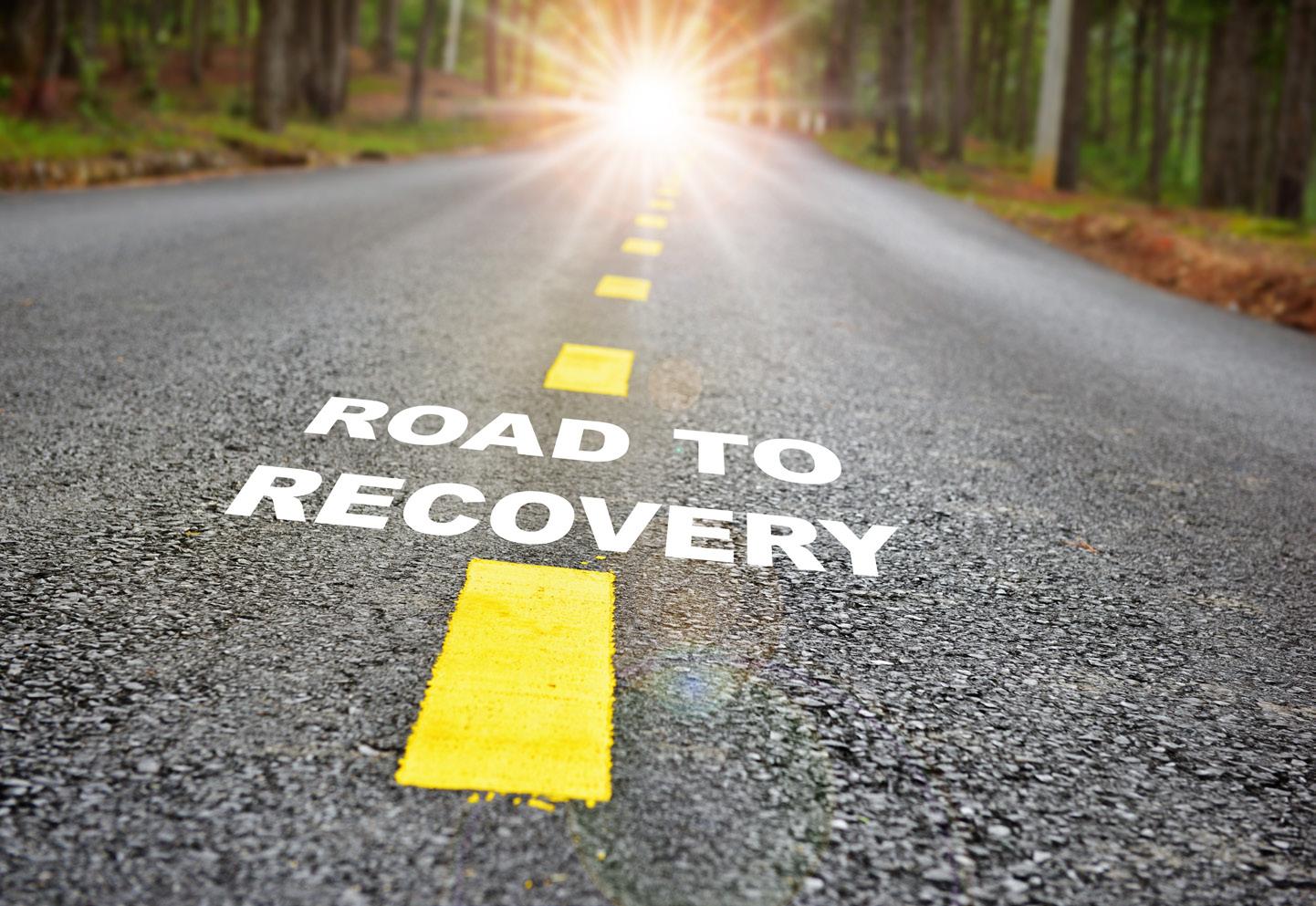
By seeking the help of a support group, the family can prepare for their loved one’s release from the program. The patient can return home to a support system that can help them stay sober.
“There’s a lot of chaos surrounding addiction and a lot of anger and frustration,” Farringer said. “The best thing a family member can do is to get themselves help and support. We have several family support groups and a parent discussion group. We encourage them to attend Anon meetings. Those are specifically 12-step groups made up of family
members impacted. There’s lot they can do to get equilibrium back for themselves.”
She compares drug addiction’s effects on the family as similar to those of a family with a member who has cancer or any other disease. It’s rough seeing a relative struggle and suffer so deeply.
“Education and support are the best things we can do for families,” Farringer said.
It’s also helpful to try to take proper care of themselves with adequate rest, stress management, good nutrition and physical activity.
By Deborah Jeanne Sergeant
Of course, risk for lung cancer increases with cigarette smoking.
According to the Centers for Disease Control and Prevention, smokers are 15-30 times more likely to have lung cancer or die from lung cancer compared with those who don’t smoke.
But smoking affects many more areas of the body and contributes to many other health problems.
“The number one health concern with smoking is that it’s the number one preventable cause of death: cardiovascular disease,” said Scott McIntosh, Ph.D., and director of the Center for a Tobacco-Free Finger Lakes, which covers Monroe, Ontario and other counties. “More die of stroke and heart attack due to smoking rather than lung cancer. It also causes other cardiovascular problems.”
McIntosh is also professor of public health sciences at University of Rochester Medical Center and serves on the board of Bureau of Tobacco Control in the New York State Department of Health.
He added that smoking contributes to diabetes complications, ulcers, osteoporosis, infertility and COPD.
Many of the more outcomes from smoking can take years to develop. This can cause young people to believe that all of the consequences of smoking will only happen once they’re much older. However, McIntosh said that’s not true.
“If you say it causes their impotence, it’s highly motivating for them to quit,” McIntosh said. “It's an addiction, not a habit, and it will stick with them for life unless they quit.”
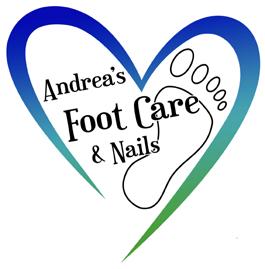
Smoking can increase risk for pneumonia, respiratory tract infections and asthma.
Mental health is also affected. McIntosh said that frequent vaping or smoking leads to two and a half times the risk for receiving a diagnosis of depression.
“Current and past depression diagnosis are a significant barrier to quitting,” McIntosh said. “Depressed people have a stronger response to smoking cues. They just had a steak dinner or their morning cup of coffee or a break time at work. Those are cues to smoke. You’ll have a higher risk of relapse if you try to quit.”
Oral health can suffer as well. McIntosh listed oral cancer, dry mouth, cavities, yellow teeth and dentures, bad breath, periodontal disease, high levels of plaque, gingivitis and nicotine stomatitis (lesions on the roof of the mouth).
Because smoking reduces blood circulation, it also delays wound healing for injuries and after surgery. McIntosh said that some orthopedic surgeons refuse to operate on patients who smoke until they quit.
Smoking also affects babies in utero. As just one example, McIntosh said that children born to mothers who smoke while pregnant are 1.4 times more likely to have a cleft lip.
“There’s potential DNA damage after using vape devices and smoking,” McIntosh said.
“Children exposed to environmental smoke are at increased risk for sudden infant death syndrome, asthma, chest infections and have higher risk for mental health conditions later in life and higher risk of smoking themselves.”

McIntosh also noted ill effects for eye health, such as higher risk for macular degeneration, diabetic retinopathy and cataracts.
“Besides lung cancer, tobacco use has been found to cause 11 other kinds of cancers, including five of the most fatal types,” said Camryn Chaffee, speaking on behalf of Onondaga County Health Department. “Poisons found in tobacco can damage or alter a cell’s DNA, which can cause the cell to grow out of control and cause a cancerous tumor. Thirty percent of all cancer deaths in the United States are attributed to tobacco use.”
She added that smokers are two to 10 times more likely to develop any of these types of cancers: mouth and throat, kidney, bladder, larynx, blood, colon/rectum, esophagus, liver, pancreas, stomach and cervix.
According to the World Health Organization, Type 2 diabetes is a leading cause of blindness, kidney failure, heart attacks, stroke, lower limb amputation, kidney disease and serious damage to the heart, blood vessels, eyes, kidneys and nerves.
“Smoking can change how your body processes and regulates sugar,” Chaffee said. “Because of this, smokers have a 30% - 40% higher chance of developing diabetes than non smokers. Smoking cigarettes makes managing diabetes more difficult. Nicotine can make it harder for the cells in the body to use insulin, which increases blood sugar levels.”
The damage doesn’t stop there. Chaffee said that smoking raises the risk of vascular problems.
“The toxins found in cigarettes cause inflammation and stress to cells,” she said. “This can lead to
an increased risk for Alzheimer’s disease, dementia, osteoporosis and ALS.
“Menopause can begin up to nine years earlier in women who smoke due to the tobacco toxins causing a reduction in circulating estrogen in the body. The symptoms of menopause can also be more severe.”
“Even one cigarette can do damage,” said Scott McIntosh, Ph.D., and director of the Center for a Tobacco-Free Finger Lakes. “Clearly, there’s a dose response relationship. The more smoking or vaping throughout life is associated with higher risks for all of these things. The good news is you can start to see health improvements immediately with complete cessation.”
Within only 20 minutes, blood pressure and heart rate return to normal levels. The positive effects continue over time in areas such as taste and smell improving, breathing becomes easier, energy levels increase and circulation gets better. Even after 15 years, the heart attack risk is the same as for someone who never smoked. However, “the lung cancer risk never goes to zero,” McIntosh said.
He encourages smokers or vapers to reach out to their primary care providers or access the New York State Quitline at www.nysmokefree.com. Or call 1-866-nyquits or text QUITNOW to 333888.


By Anne Palumbo
My love affair with farro began at first bite. Nutty and satisfyingly chewy, farro soon became my favorite whole grain, finding its way into soups, salads, and sides.
My fondness only deepened as I got to know its many health benefits and ready availability, downright remarkable for a 20,000-year-old ancient grain!
Why the grain-crush? Let me count the ways.
Farro, like many whole grains, is a good source of fiber, an essential nutrient that many American diets lack. While fiber is important for every age, it’s especially important for older adults whose systems may be sluggish because of inactivity, less muscle mass and slower metabolisms.
of daily calories. Niacin, a B vitamin, keeps our bodies humming by converting food to energy, raising “good” cholesterol, and boosting brain function.
Whole grain farro brims with antioxidants — beneficial molecules that neutralize harmful free radicals that have been linked to multiple illnesses.

Of course, fiber does a whole lot more than relieve constipation: it also helps with weight maintenance by promoting a full feeling; it stabilizes blood sugars; and it can even help lower blood cholesterol levels.
Multiple studies confirm that a high-fiber diet is associated with a lower risk of heart disease and Type 2 diabetes and a higher probability of a happier gut.
This versatile grain is also a great source of protein and niacin, each providing about 20% of our daily needs. Eating more protein can positively affect your health (and waistline!) by keeping muscles and bones strong and by curbing the urge to snack.
One study in overweight men showed that cravings and late-night snacking were reduced by over 50% when protein was increased to 25%

Why do free radicals, which are constantly being formed in your body and serve important functions, ever need to be neutralized?
In a word: Too many roaming around can damage your DNA, increasing your risk of diabetes, heart disease and cancer. And today’s lifestyle—from sunbathing to cigarette smoke to alcohol intake to air pollution—unfortunately has been linked to excessive free radical formation.
Although farro comes whole (with its hull intact), most farro sold in the U.S. is hulled to some degree, rendering it “pearled” or “semi-pearled.” Hulled versions do not need to soak overnight and take only 30 minutes to cook. Cooked farro keeps in the fridge for five days, but can be frozen to last longer. To freeze, spread the grains in a single layer on a baking sheet and transfer to the freezer for at least two hours.

Rich and hearty, farro is naturally low in fat, sodium, and cholesterol, clocks in at around 80 calories per average serving, and is a delicious, nutritious alternative to refined grains.

Anne Palumbo is a lifestyle columnist, food guru, and seasoned cook, who has perfected the art of preparing nutritious, calorie-conscious dishes. She is hungry for your questions and comments about SmartBites, so be in touch with Anne at avpalumbo@aol.com.
By Shaina Zazzaro
We wait all year for summer — for the sunshine, the outdoors, the cookouts and, sometimes, the cocktails. Here are some tips to keep healthy during the summer without sacrificing your health.
1. Move. Even if you are on vacation, don’t forget to at least get your steps in. When people ask me how many steps they should get, it’s sort of subjective. For example, if you are completely sedentary and are only walking 2,000 steps a day, moving even an extra 1,000 is beneficial. Remember, any movement is
For the salad:
2 cups cooked farro
2 cups greens of choice, spinach, kale, mixed greens, etc.
2 large peaches, pitted and sliced
1½ cups blueberries
1½ cups grape tomatoes, halved
2 small ears sweet corn, kernels removed (about 1½ cups)
½ to 1 cup crumbled feta cheese
3 tablespoons chopped basil
1. In a large bowl combine the farro, greens, peach slices, blueberries, tomatoes, corn, feta, and basil.
2. In a small bowl, combine the olive oil, lemon juice, vinegar, garlic, shallot, salt, and pepper.
better than no movement. If you are a relatively active person you should strive for a minimum of 8,000 steps a day! Remember, the more you move, the better you will feel!
2. Meal Prep. Yes, I may be the queen of meal prep, but it is honestly the best way for you to be able to consistently eat healthy and reach your goals. Don’t be afraid to bring your own cooler to an event with your prepared meals, I do it all of the time. Plan and track your calories.
3. If you are planning on going out to eat, make sure you eat less calories throughout the day. For example, instead of a burger for lunch, go ahead and have a healthy piece of chicken. You’ll eat about half the calories and fat, with the same amount of protein. When you go out to eat, skip the appetizer and the alcoholic beverage — that alone can save you hundreds of calories, and you will be able to enjoy
For the dressing:
1/3 cup olive oil
Juice of 1 lemon
1 tablespoon champagne vinegar or white balsamic vinegar
2 cloves garlic, minced
1 small shallot, minced (optional)
Salt and black pepper, to taste
Whisk until well combined.
3. Drizzle some or all of the dressing over the salad and gently toss until salad is well coated. Serve immediately.
your entree without guilt.
4. Create some fun mocktails. Alcoholic beverages are not only calorie-laden, but they slow down your metabolism, cause you to not be as conscious of what you are eating, cause restless sleep and really can negatively affect your weight loss goals. A little cranberry lime seltzer mixed with some diet or regular cranberry juice tastes just like a cocktail, without the alcohol.
Remember friends- the healthier you eat, the more you move, the better you will fee I can guarantee it.
Happy summer 2024!
Shaina Zazzaro is a wife and mother of two, blending her roles with a passion for health and wellness. She is the owner of local meal delivery service, Effortlessly Healthy. For more information, visit www.ehmeals.com.
The term has been criticized as patronizing and vague and is falling out of favor
By Deborah Jeanne Sergeant
The euphemism “special needs” has come under fire in recent years as derogatory when referring to people with disabilities, in part because of the term’s misuse as a slur.
“Special needs” also seems to indicate that someone with a disability and their family expect extraordinary treatment.
“I’m training myself not to say it,” said Heather Burroughs, director of advocacy and education at AutismUp in Rochester. “A self-advocate said to me, ‘What’s so special about it? We all have abilities and challenges and there’s no reason to call it ‘special.”’
A mom of four children on the autism spectrum, Burroughs isn’t a fan of “neurodivergence,” as that term “sounds like a superhero or villain,” she said. “You’ll hear ‘people with lower support needs’ or ‘higher support needs.’”
But such gangly phrases easily become clumsy with repeated use, whether in print or spoken. Bur-
roughs decided she would always use “person-first” language, such as “a person with autism” instead of “autistic.” However, when she began working with adult clients, she would hear, “I’m autistic.”
She believes that part of the reason is that by adulthood, those using “autistic” to describe themselves understand their autism and their preferred coping mechanisms. One of strategies is telling people upfront that they’re autistic so that others can better relate to them. For these adults, “it’s not something worth hiding so they embrace it,” Burroughs said. “Good for them.”
The term “special needs” is vague, which Burroughs finds sometimes helpful for describing children with varying needs and multiple diagnoses. It’s also a time when their families may still be struggling to understand and cope with the need for different supports for their child.
But “special needs” can be frustrating when needing a term to describe in writing a number of
By Deborah Jeanne Sergeant
Nothing reverses autism. However, a few holistic strategies can help their children cope in a world that can be hard for them to understand and deal with.
• “Keep a regular bedtime. At 19 we still do shower and bed at 8. It works better for him and for us as a family. The routine is so critical. Visual schedules work well for him. We have a magnetic calendar weekly on the fridge. He has yoga, piano lessons and any doctor or dental appointments so he can see his week in advance or anything special at school so there are no surprises. You need to tell him before you put it on the calendar. He likes to know beforehand what we’re doing.
• “If there’s a family event, he likes to know who will be there. He likes to see photos of the hotel if we’re going on vacation. He has particular toys and objects he likes to take with him. My husband and I joke that he has an old cookie monster plastic toy we found when he was 3 and a Leapfrog drum toy. He sets them up in a line at the hotel or Airbnb. The TV has to be on The Weather Channel. I have to make sure the place has cable TV.
• “It takes lots of planning. Pre-
plan everything. We don’t have the luxury of doing anything at the drop of a hat.
Lisa M. Latten, whose son, Ian, is on the autism spectrum, earned a master’s in education and serves as clinical administrator for the Division of Developmental and Behavioral Pediatrics at URMC.
• “My daughter does very well with a raw food whole, natural diet. It’s hard to do as she eats a natural, organic, nothing-added.
• “I’ve worked with hundreds of families. Gluten-free and casein-free was a big movement. But it comes down to if your GI system is impacted, that approach may work for you. For my kids, protein dense, low-carb options with less refined sugar makes a difference. It doesn’t totally change their outcome, but it helps.
• “The tricky part is you can’t start everything at the same time to see what works. I’m not huge on meds, but sometimes they’re absolutely necessary.
• “Even parents who are hesitant to try medications should think about melatonin so the child can sleep better.
different populations. It could mean anything from a person who struggles to read to someone completely dependent on others for activities of daily living.
In one-on-one conversations, Burroughs asks for and uses the term an individual prefers. However, in writing or public speaking, it gets trickier.
“People know when you’re being respectful and your intentions are in the right place,” she said.
Claiming that everyone has some kind of special needs is disingenuous to families who have fought school boards and intensely struggled to help their children access school resources, for example.
Emily Knight, developmental behavioral pediatrician and neuroscientist at the University of Rochester, also asks for and uses the language that the individual prefers. However, in academic talks or papers, alternat-
ing person-first with diagnosis-first language “can help everyone keep an open mind that others might have a different approach and experience,” she said. “We explain why we select terms we use. It gives people context so they won’t think we meant anything offensive by the choice. It can help everyone keep an open mind that everybody might have a different approach and experience.”
She also uses a disclaimer when appropriate to make it clear that no offense is intended. Like Burroughs, she has noticed that some populations embrace disability as a cultural or personal identifier, such as “deaf person” instead of “person with hearing impairment” or “autistic” instead of “person on the autism spectrum.”
“When people express an identity, we should honor it,” Knight added.

• Trying to figure out their sleep environment like if they prefer hot or cold, dark or light. You have to try different things. One parent as soon as they put the mattress on the floor their sleep changed. Or stopped using footie pajamas. They may not be able to express what’s bothering them.
• “Exercise releases endorphins. They may want to jump as it causes joint compression. They may want to wear a heavy backpack. They may feel like they’re drawn to that iPad but they need to move. Having a movement goal every day is helpful for many families.
• “Communication is everything. When you find a way to communicate, you open the door for quality of life. My daughter started spelling to communicate and the difference is astounding.”
Heather Burroughs, director of advocacy and education for AutismUp in Rochester and mother of four autistic children.
• “The ABCs of behavior stands for antecedent, behavior, consequence. It’s a journaling approach parents can use to look at their
children’s behavior. See what the setup was. Was sleep bad? Were there too many lights? Behavior: What happened? See what happened afterwards. How did people respond? Did it make things better or worse? How can we set up things to go better the next time? You can use this with other children. Behavior is a form of communication. A negative behavior says I need something. As parents or other caregivers, we need to be detectives to discover what that behavior is trying to tell us. We should look at people and wonder why they’re doing that and how we can build a skill instead of an opportunity for a timeout. Anytime you see a new behavior; that should raise your awareness to see if something changed. Is there belly pain or something that’s not going well at daycare or another setting? What might have changed that led to this? Make sure we’re not missing things for kids who can’t tell us about their internal experience in a way we recognize. We have to work harder on our end to recognize these patterns.”
Emily Knight, developmental behavioral pediatrician and neuroscientist with University of Rochester Medical Center.
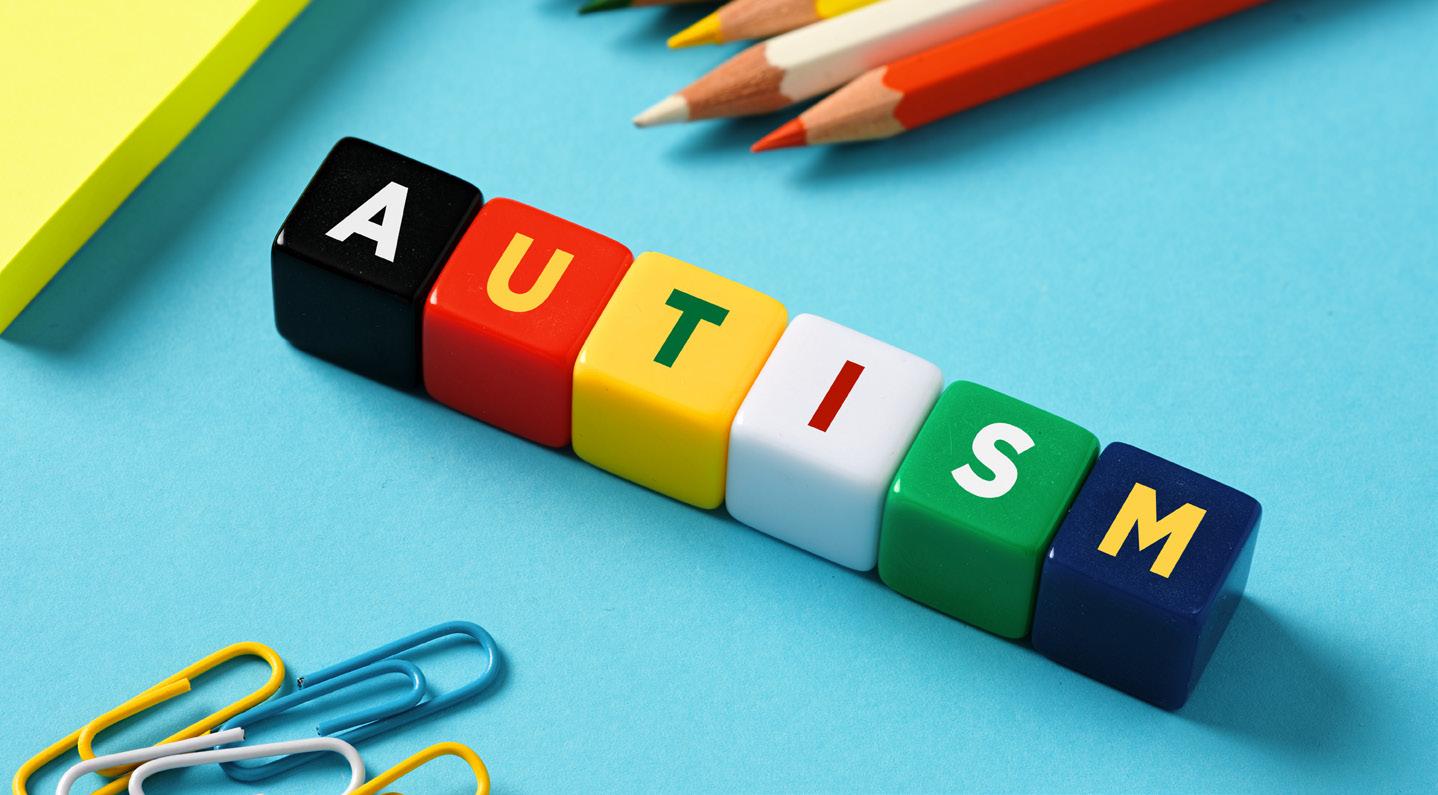
say increase in kids with autism has many reasons
By Deborah Jeanne Sergeant
If it seems like more children you know have an autism diagnosis, you’re not imagining things.
The Centers for Disease Control and Prevention states that 5.5% of U.S. children aged 3-17 were identified as on the autism spectrum in 1997 compared to 9.8% in 2018.
But why?
“The main explanation as to why we’re seeing increased numbers and hearing about autism is awareness and recognition,” said Emily Knight, developmental behavioral pediatrician and neuroscientist at the University of Rochester. “We are recognizing more kids that would have been missed previously.”
Part of the reasons is that universal screening is recommended at pediatrician offices. Knight added that changes in the diagnosis criteria make it easier for identifying children presenting with subtler symptoms who might still benefit from support.
In previous generations, children who might be noticed as “quirky” or “odd” may receive closer scrutiny — a second look that could help more children receive help they need.
“Another thing we’ve noticed is groups where we were not doing
a good job in picking up on people such as nonwhite populations and girls,” Knight said. “We’re doing a better job at identifying those with autism. Although we need to do a better job.”
She also noted that the differences between how girls and boys present has made it harder for some providers to diagnose girls.
“It’s not so much the screening tools are different,” Knight said. “They were always designed for anyone for whom there might be a concern. The diagnostic evaluation doctors are using criteria that make it easier to find those non-classic presentations people think of.”
She encourages parents to speak up if they notice something unusual in their child.
“Parents know their children best and if they ever have a concern about how their child is developing, they
Over 60% of people with intellectual and developmental disabilities supported by Heritage Christian Services are 50 years of age or older
Heritage Christian Services’ Homes with Heart campaign has received a great deal of support from the community. West Herr Automotive Group recently made a significant gift to the campaign, which has inspired the agency to officially name a newly built home on Names Road in Chili as the “West Herr Automo-
should contact their primary care provider because there are supports out there and we want to make sure they’re available to everyone,” Knight said.
Heather Burroughs, director of advocacy and education at AutismUp in Rochester, referred to “From Snake Pits to Cash Cows: Politics and Public Institutions in New York” (Castellania, 2005) which said that in 1935, there were 135 cases of autism across the U.S. compared with “hundreds of thousands now,” Burroughs said.
A mother of four children on the autism spectrum, Burroughs doesn’t pin the entire reason for more autism diagnoses on shifts in screening and diagnosis. She said that part of the reason could be that people with autistic traits are having children, meaning that more people would have autism.
“There’s a hereditary component; you can see it in several members
of some families,” Burroughs said, noting that several people in her family are on the autism spectrum. One of her grandmothers exhibited traits then thought of as quirky but not autism.
Burroughs also thinks that an environmental aspect may play a role in why people have autism. Anecdotally, some families have reported that eliminating certain food types or food additives helps mitigate their autistic child’s behavioral issues. The “trigger” food varies even in the same family. Gluten, casein, refined sugar and certain food additives and preservatives are often named as culprits. However, improved behavior and life quality does not indicate a causal effect between foods and autism. But some people have discovered that eliminating some foods reduces unwanted behaviors in their children on the spectrum. No largescale studies have identified a cause for autism.
All of sudden, it seems there is a huge number of ‘special needs’ kids. How did that happen and what’s driving the increase in the number of such kids. Experts weigh in
By Deborah Jeanne Sergeant
If it seems like more children you know have an individualized education plan, you’re not imagining things.
Data gathered by the Pew Research Center from the National Center for Education Statistics states that the number of students in special education soared from 3.6 million in the 1976-77 school year, to almost 7.3 million in 2021-22. That’s 15% of the nation’s students.
“There’s more awareness of disability and the educators and providers are more attuned to possibilities,” said Christy Ashby, professor of inclusive special education and disability studies and the director of the Center on Disability and Inclusion at Syracuse University.
Universal screening is recommended at pediatrician’s offices. Changes in the diagnosis criteria
Harry Bronson.
“Being a part of a community or a family is so important to your health, longevity and wellbeing,” said Morelle. “Heritage Christian Services has provided this for people in this community for decades. I am grateful knowing that they're here, and will continue to be here.”
make it easier for identifying children presenting with subtler symptoms of things like autism spectrum disorder who might still benefit from support.
In previous generations, children who might be noticed as “quirky” or “odd” may receive closer scrutiny — a second look that could help more children receive support they need.
As for identifying any kind of learning disability or other reason for an IEP, schools may be looking harder at students who lag.
“The pressure in schools has gone up,” Ashby said. “More kids were ending up in segregated education because of concerns that they wouldn’t keep up. There seems to be a rise of kids with mental health and sensory concerns. I’m not sure what that’s about, whether environmental.”
tive Home.”
The name change was made official at a ribbon-cutting ceremony on July 17, which featured many special guests including Congressman Joe Morelle and representation from West Herr Automotive Group and from the office of Assemblyman
Over 60% of people with intellectual and developmental disabilities supported by Heritage Christian Services are 50 years of age or older. It became apparent to the agency that something needed to be done so that they could continue to live in comfortable and familiar home settings.
“We have people who need skilled care as they age; where do they go if agencies can’t provide it?” said Marisa Geitner, president and C.E.O. of Heritage Christian Services. “They're left in clinical settings, which is creating a crisis. It warms
my heart to know that over 400 people we provide residential services to today will not add to that challenge thanks to this work.”
The West Herr Automotive Home provides living accommodations for five people, with features like wider hallways for wheelchair access, walk-in bathrooms and a concentration of amenities on the ground floor, to name a few. Scott Bieler, president & C.E.O. of West Herr Automotive Group, spoke previously about his support of the campaign.
“Homes with Heart resonates strongly with me,” said Bieler. “I have seen what Heritage Christian Services is capable of for many years and know that my gift will go a long way in supporting so many people.”
For children on the autism spectrum, even a well-child visit can be stressful
By Deborah Jeanne Sergeant
Visiting the doctor’s office — even for a well-child visit — can feel stressful for some children.
They may worry about receiving a shot or having an unfamiliar grownup perform an examination. For autistic children, these worries are magnified as the stimuli that’s mundane for typical children seems intolerable: bright lights in the waiting area and exam room, loud cartoons on the TV, pungent cleaning solution odors, scratchy exam gowns and exam tools that touch their bodies in unfamiliar ways, like the otoscope in the ears. Over-stimulation can cause behavioral issues as children try to express their discomfort.
Planning can make doctor’s visits easier for children.
“Make sure that you notify the doctor’s office that your child has development differences and may need accommodations,” said Emily Knight, developmental behavioral pediatrician and neuroscientist with the University of Rochester. “Try to minimize wait time in a busy waiting room.”
Preparing the doctor and staff for the visit is one of the top strategies for Heather Burroughs, director of advocacy and education for AutismUp in Rochester and a mom of four children on the autism spectrum.
“We have healthcare portals to send messages,” she said. “Let them know that you will call them when you get there and you’re not going to sit in the waiting room. They can call you back when they’re ready so
you can walk directly into the exam room.”
This strategy helps many autistic children who would otherwise not tolerate the waiting room. Burroughs also warns doctors about any specifics such as one of her children feels fearful of when a doctor wears a white coat because she associates the garment with admission to the hospital — and her previous unpleasant experiences there. Simply removing the coat makes the visit easier for the girl.
Burroughs also plans with personnel that if her child needs a treatment or procedure that’s stressful, she would like to be the one to provide comfort afterwards and not the one that holds her child down.
“I used to think that it was my job to keep her under control,” Burroughs said. “I never made it sound like the doctor is mean. I’d say, ‘They’re doing their job. After, I’ll make sure you’re OK.’”
Planning at home also makes visits go better. Of course, an emergency visit can’t have the same level of planning as a well-child visit. However, for the latter, Lisa M. Latten learned to prepare her son with a few strategies.
“This is something my son, Ian, struggled with for years,” Latten said.
Latten earned a master’s in education and serves as clinical administrator for the division of developmental and behavioral pediatrics at URMC. She would take her son on a “drive-by” of the doctor’s office and walk through the waiting area, see

the check-in desk and show step by step how the visit would go. She also used the picture exchange communication system (PECS) to make him a photographic schedule of how the visit would go, including the waiting area, the place where the nurse would weigh him and how he would have to remove his shoes. (Since he hated taking off shoes and wearing only socks, she made sure he wore flip-flops to visits, even in winter.)
By detailing every aspect of the visit, Latten could prepare Ian so fewer things would surprise him.
“The last thing was the picture that says ‘All Done’ and we’d go home,” Latten said. “There was usually a snack involved. Ian didn’t have language at that point and he had a lot of anxiety. He’s now 19 and loves going to the doctor and dentist. It allowed him to be successful. Now I can say, Ian, you have a doctor’s appointment at 1 and we don’t have to have the PECS.”
YouTube videos can help children prepare for visits, as well as children’s books about doctor’s visits. Latten said that Sesame Street has created a lot of media relating
to visiting the dentist, doctor and optician.
Latten said that during visits, distracting the child by asking them to count the numbers on the blood pressure cuff can help, as can bringing a favorite stuffed animal (the “patient” who will be treated first). Some children have a special object that brings them comfort and bringing it along helps.
Role playing helped Ian when he was small. Latten bought him a toy doctor kit and they practiced at home.
“I’d say, ‘This will pinch a bit,’” she recalled. “I’d put it on my arm and say, ‘Ow! That hurts. All done.’ Don’t lie and say it won’t hurt.”
It’s also helpful to not tell the child too far in advance about an upcoming visit. Revealing it just two days before limited the amount of stress Ian would experience without springing it on him at the last minute.
“Make a huge deal about how brave they were,” Latten said. “It shows they can do hard things. Acknowledge ‘This was hard and you did it.’”

By Deborah Jeanne Sergeant
Working as a certified child life specialist at UR Medicine Golisano Children’s Hospital, Nicole Lavery sometimes struggles to explain her job to people unfamiliar with the profession. It’s definitely not coloring all day.
“Our job is definitely different department to department, but a major part of our role is to focus on psycho-social role and reduce patient and families’ stressors and anxiety at the hospital,” she said.
In the emergency room where she works, a lot of her support surrounds normalizing the environment for families and preparing them and the patients for procedures. It’s also about helping them cope with what may be the most stressful days of their lives.
“A lot of times, some of the support that patients need is proper preparation for procedures,” Lavery said. “We’re showing them the equipment and helping them understand what it will feel like and coaching them through every step.”
For children about to receive stitches, a child life specialist may bring the suture material in to show them.
For an in-patient surgery pro-
cedure, the child life specialist may discuss what aspects of a procedure concerns them or why they feel afraid. Child life specialists also engage children who experience long hospital stays. Playing games, blowing
coursework at Utica College that included a child life emphasis. Passing a certification exam is also required, along with a practicum and 600-hour internship.
It’s also helpful to be adaptable and empathetic.
The Bureau of Labor Statistics states that the average mean wage is $60,380.
bubbles or creating artwork can relieve stress and help children feel more like themselves again.
Beyond the positive emotional outcomes of her work, which can be hard to measure, Lavery said that child life specialists’ work can also help reduce patients’ need for sedative and pain medication.
Typically, people entering the field have a background in a psychological field and additional coursework relating to the medical terminology required. Lavery completed a degree in child psychology and
By Empowering People's Independency (EPI)
Acar accident, a stroke, a bad fall — traumatic brain injury (TBI) can turn lives upside down in an instant.
For survivors, the path to recovery is often long and difficult, filled with many physical, mental and emotional challenges. Families, too, are deeply affected as they deal with caregiving and the emotional pain of seeing a loved one struggle.
TBI survivors may face physical problems like difficulty with movement and coordination, as well as mental challenges such as memory loss and trouble concentrating. Emotional and behavioral changes, such as depression, anxiety and personality shifts, add another layer of difficulty. These issues often require a team approach to treatment, involving physical therapists, occupational therapists, neuropsychologists and other specialists.
For families, the journey is equally tough. They often become caregivers, advocating for their loved ones while handling their own emotional and financial stresses. The lack of awareness and understanding about TBI in society can lead to feelings of isolation and frustration.
“The immediate aftermath of
a TBI can be overwhelming,” says Joseph Abbott, chief operating offer of Empowering Independence (EPI).
“Accessing the right care and rehabilitation services can be a big challenge. At EPI, we understand these struggles deeply. Our comprehensive services are designed to support both TBI survivors and their families throughout their journey.”
EPI offers personalized rehabilitation programs that address the specific needs of each person, focusing on improving physical, mental and emotional well-being. EPI also offers structured day and evening programs, providing an adult learning setting where individuals with cognitive impairment due to a brain injury can take part in meaningful and life-enhancing activities. These community-based programs are designed to improve or maintain a person’s skills and ability to live as independently as possible in the community.
Living with the effects of a traumatic brain injury is undeniably challenging, but with the right support and resources, survivors and their families can find hope and strength.
For more information about EPI’s TBI services, visit epiny.org.
“You meet a lot of families of different backgrounds and in stressful situations,” Lavery said. “Make sure you have a good work-life balance. It’s pretty easy for anyone entering the field to want to jump in wholeheartedly. That balances for the longevity for a job like ours. Have some good support in your life.” She likes the dual expertise required to work as a child life specialist. “I always had
an interest in the medical profession and psychology,” Lavery said. “The ability to focus on families’ mental health and in a medical field it was just what I was looking for.”
Understandably, she experiences many challenging days in the emergency room. But she feels that the most challenging work can also be the most satisfying work.
“We’re seeing families in the most stressed state on the worst day of their lives,” Lavery said. “It’s rewarding to make an impact on their experience on such a challeng-

ing day. You can be a light in such a significant environment. We don’t always see the long-lasting results of our work. Some come back and say they had a good experience in such a scary time.”
Lavery said that healthcare facilities and doctors’ offices need more child life specialists in this growing field.

By Deborah Jeanne Sergeant
If your children are behind on their routine immunizations, it’s vital to get back on schedule.
During the pandemic, many families got off schedule as routine visits were canceled and many pediatric well-child visits were delayed.
-Physician Steve Cook, with UR Medicine, answered a few myths about childhood vaccines.
MYTH: My child doesn’t need vaccines because we don’t see these diseases anymore.
FACTS: “We’ve had so many people refuse vaccines that we’re starting to see cases of polio and measles in America. The vaccines are very good at protecting people. Because of how the infection doesn’t spread as easily, we get herd immunity. We see measles and polio in this country in populations that are unvaccinated for personal or religious reasons.”
MYTH: HPV vaccine is too new to trust.
FACTS: “HPV is very safe and has been very effective in preventing cancer. We wait until children are early adolescents because it’s primarily transmitted because of having sex. It’s not required for school. Some think their kids will wait but those
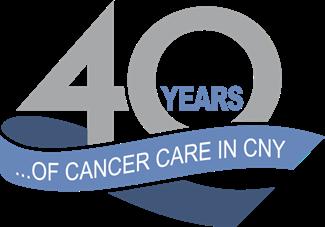
behaviors happen before we even realize it. That’s why we recommend it at 11 or 12.”
MYTH: All childhood vaccines are done by high school.
FACTS: “Pneumonia and meningitis vaccines are relatively new in the past eight-10 years. We see cases of this in young adults living in dorms at colleges. We developed these vaccines to prevent potentially devastating infections in young adults.
MYTH: Skipping vaccines makes my kids’ immune system stronger.
FACTS: “The reality is, that is not true. In early childhood when kids are exposed to viruses, we don’t have vaccines for those. That does help the immune system. But the vaccines we have are for very serious infections that are life threatening or debilitating. Whooping cough used to kill a lot of infants in this country. Mumps vaccine prevents an annoying infection, but mumps can cause infertility in men. It can be transmitted to women and cause congenital anomalies in children they bear. Because we’ve been doing some of these vaccinations so long, you don’t even see these infections.”
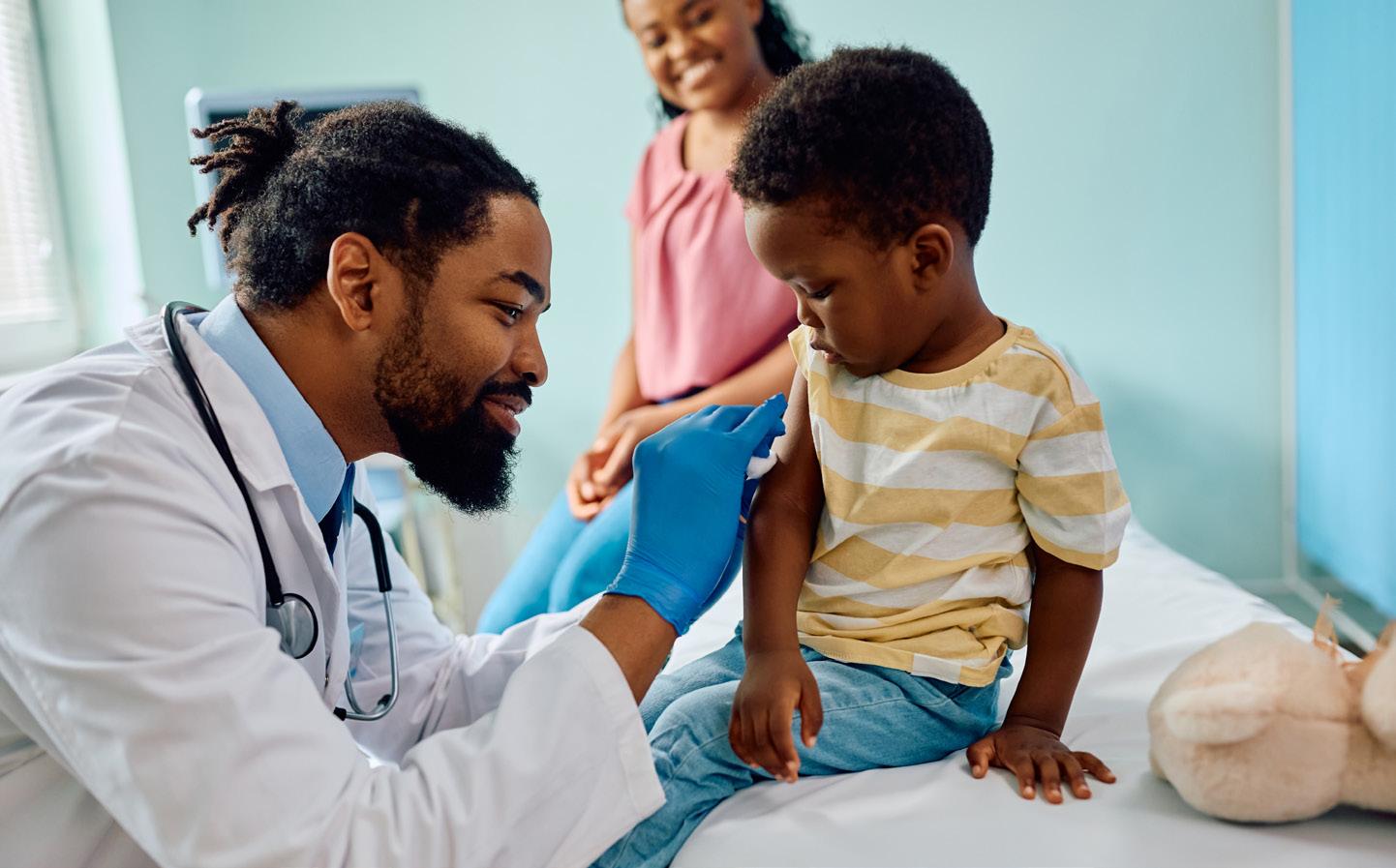
MYTH:I don’t want my baby’s immune system to get overwhelmed by too many vaccines at once.
FACTS: “We’ve been doing multi vaccine shots through the first year for a couple decades now. They’re tolerated very well.”
MYTH: It’s unlikely my children will have a serious disease if they’re not vaccinated.
FACTS: “These vaccines are for highly preventable infections. These infections have severe consequences. Everyone wants to play the small numbers game. The chances of getting meningitis may be one in 20,000, but the devastation that could result is horrifying. Vaccinating as many as possible is where it works. In the case of HPV, we’re seeing less cancer in young adults from human papilloma virus because of this vaccine. The vaccine is working in a long-term
range. These are very simple ways to prevent things and that’s how prevention works.”
MYTH: Vaccines or vaccines’ preservatives cause autism.
FACTS: “The autism/vaccine link has been debunked. Some data in Europe showed that kids without vaccine had a higher rate of autism.”
-Physician Emily Knight, developmental behavioral pediatrician and neuroscientist at the University of Rochester, also addressed the concern about vaccine and autism.
FACTS: “Vaccines do not cause autism. The time when we are diagnosing autism is a time where in typical development there’s a big explosion in social skills between 1 and 3 years. We pick up on autism in that time period.”
Frank Guido couldn’t be happier he had a choice for treating his prostate cancer!

To hear more of Frank’s story and learn if CyberKnife is right for you, visit hoacny.com
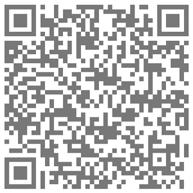
Frank chose non-surgical CyberKnife® at HOA –offering 5 treatments instead of 35!
“The original diagnosis was to treat my prostate cancer with seven weeks of radiation, five days a week. I was kind of upset that I was never given the option of CyberKnife,” said Frank. “The precise radiation achieved by CyberKnife, far fewer treatments, and the personalized care I received from Dr. Chin and his team made my decision an easy one. Better, the treatment was a real success!”

By Jim Miller
Most people don’t realize that each year, extreme summertime heat kills more people in the U.S. than hurricanes, floods and tornadoes combined.
While extreme heat can be deadly for anyone, older adults are uniquely vulnerable because of three key factors: biological changes that occur with age; higher rates of age-related diseases; and greater use of medications that can alter the body’s response to heat.
Here’s how to gauge the risk for a heat-related illness for you or an older loved one and how to stay safe.
The human body has two main mechanisms to cool itself: sweating and increasing blood flow to the skin.
In older adults, both of those processes are compromised. Seniors sweat less and they have poor circulation compared with younger people.
Chronic health conditions that are more common in old age, most notably cardiovascular disease and diabetes, can also exacerbate these issues. A diseased heart isn’t able to pump as much blood, further reducing blood flow to the skin. And if the nerves become affected in people with diabetes, the body might not receive the message that it needs to start sweating.
As people age, they also stop feeling as thirsty and so they tend to drink less. In hot conditions, that can cause them to become dehydrated faster.
In addition, some older adults, particularly if they have some form of dementia or cognitive decline, may not perceive temperature changes as well. As a result, they won’t respond appropriately to heat, both biologically (through sweating) and behaviorally (by moving to someplace cool).
Finally, certain medications many seniors take like diuretics and other high blood pressure drugs can affect
people’s hydration, blood flow and even the sweat response, so be sure to ask your doctor about any medications you’re taking.
On hot days, older adults and people with serious health conditions should limit outdoor activities like walking and gardening to the cooler mornings and evenings, take frequent breaks and drink plenty of water even if you aren’t thirsty. Listen to your body. If the activity starts to feel harder than normal, that’s a signal to stop and find a place to cool down.
Signs of dehydration or heat exhaustion include dizziness, lightheadedness, headache, flushed face, a racing heart or feeling lethargic. Low energy is especially important to watch out for in people with cognitive impairment, who may not realize how hot they are or be able to express it.
If heat exhaustion worsens to a heatstroke, it becomes a life-threatening emergency.
While older adults face unique challenges when it comes to heat, the ways to cool down are the same for any age. If you or a loved one start to experience any of the above symptoms, the best thing you can do is to go somewhere that has air-conditioning. If AC isn’t available in the home, check if there’s a local cooling center.
In the absence of air-conditioning, water is extremely helpful in reducing the risk for heat-related injury. Rubbing an ice cube or cold compress over your skin, spraying yourself with cool water or taking a cool shower or bath can also help.
For more heat related safety tips, visit the Center for Disease Control and Prevention website at CDC.gov/ extreme-heat.
Jim Miller is the author of “Savvy Senior,” a column that runs every issue in In Good Health.



Elemental Management Group, which operates senior facilities in Rochester, Oswego and in the Mohawk Valley, has recently developed a 75-hour, three-week hybrid course nurse aide training program. It is designed to help expedite CNA training.
It enables students to complete the program in less than three weeks — instead of 164 hours across four to six weeks. The hybrid CNA program can accommodate up to 20 students, providing sufficient instructors are available for clinical time.
Recently, In Good Health spoke with Judy Harding-Staelens, registered nurse, licensed nursing home administrator and regional director of operations for Elemental and Peg Reith, registered nurse, regional nurse educator and CNA educator

By Stefan Yablonski
can work nights; they can take care of their kids, their parents, they can take care of a neighbor.
Q: So, this course is user-friendly?
A: (Peg) This course is very user-friendly for anybody who is dealing with life right now. They download the app, they use a laptop, they can use a tablet, whatever. Everything that they need to learn is right online. The CNA videos are online for them as well. They only have to come into the building to do their on-hand skills and the clinical portion of it. So it is very user-friendly for anybody who is short on time that wants to advance their career.
Q: How many graduates have you had so far?
A: (Judy) We are at least 320
with the residents. Sometimes they are just there as companions.
(Judy) The role of a CNA is a vast one. For long-term care, they are the primary direct caregivers. They have a lot to do with long-term care facilities on how well we care for our residents, how many we can take care of. They have a very big role there with all the residents.
Q: Who are the instructors?
A: (Peg) I am one of the instructors. I work in multiple buildings. Each building has an educator. They do have to be approved by the NYS Department of Health and have a train-the-trainer certificate as well.
Q: Where do students go to work after successfully completing the course?
And a lot of these facilities offer a sign-on bonus at the end of the class. It’s definitely a win-win.
Q: Do you train others?
A: (Judy) We do the training for other facilities. If a facility doesn’t have a CNA training program — or even if they do — they can connect with us and we’ll come in and train their trainer in our program and then it is theirs to use. Elemental has two packages. One provides training for educators who want to teach the hybrid CNA classes at their own facility. The other package completely handles the hybrid CNA classes as a third-party entity.
Q: How long have you been doing this?
… and two more starting in August.
three weeks on average. Students unable to finish in the prescribed three weeks can jump into the next session



A: (Peg) When they finish the course, they are offered employment. They get interviewed — some buildings interview them prior to taking the course. Students who finish the course can apply to work in that building. Usually, they stay and work at the facility that they went through the course with. If they choose to go elsewhere, they absolutely can if they choose to; depending on if they signed a contract or not.
A: (Judy) We are a year and five months into this. We haven’t changed it; we are getting better at it — adding more instructors and more buildings. The more students taking this, the better for New York state nursing homes.
Q: This is a growing profession?

Q: What are the duties and responsibil-
A: (Peg) A CNA does the bathing, shaving, feeding, caring — working





Q: Is there a cost to the student?
A: (Judy) This is free for the students. They can come to the facility and the facility pays for the training.
A: (Judy) Yes, people are starting to come back to this profession after the end of the pandemic. (Peg) We are very proud of what we have been able to do for the communities; putting CNAs back out there when they are really needed. They are coming back in droves now.



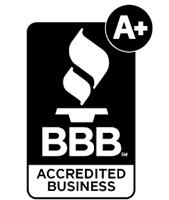

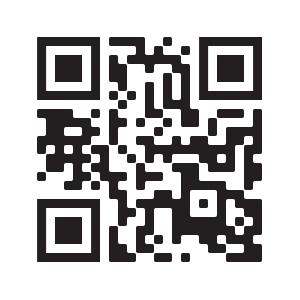
Hybrid Nurse Aide Training Program
Hybrid Nurse Aide Training Program
Hybrid Nurse Aide Training Program ELEMENTAL MANAGEMEN UP




Hybrid Nurse Aide Training Program ELEMENTAL MANAGEMENT GROUP
















MANAGEMENT GROUP

Equip your facility with our unstoppable HYBRID CNA program, empower your team to deliver top-notch care with the strength of a champion.
Equip your facility with our unstoppable HYBRID CNA program, empower your team to deliver top-notch care with the strength of a champion.
Equip your facility with our unstoppable HYBRID CNA program, empower your team to deliver top-notch care with the strength of a champion.
Equip your facility with our unstoppable HYBRID CNA program, empower your team to deliver top-notch care with the strength of a champion.
Are you looking for an innovative way to attract CNA students? We have your answer
Are you looking for an innovative way to attract CNA students? We have your answer
Are you looking for an innovative way to attract CNA students? We have your answer
Are you looking for an innovative way to attract CNA students? We have your answer
Are you looking to minimize and most importantly eliminate agency use? We have your solution
Are you looking to minimize and most importantly eliminate agency use? We have your solution
Are you looking to minimize and most importantly eliminate agency use? We have your solution
Are you looking to improve morale by increasing your direct care PPD? Reach out to us to hear more
Are you looking to minimize and most importantly eliminate agency use? We have your solution
Are you looking to improve morale by increasing your direct care PPD? Reach out to us to hear more
Are you looking to improve morale by increasing your direct care PPD? Reach out to us to hear more
Are you looking to improve morale by increasing your direct care PPD? Reach out to us to hear more
Are you looking to captivate and motivate the newer generation by offering unique and rewarding training opportunities? Look no further contact us today
Are you looking to captivate and motivate the newer generation by offering unique and rewarding training opportunities? Look no further contact us today
Are you looking to captivate and motivate the newer generation by offering unique and rewarding training opportunities? Look no further contact us today
Are you looking to captivate and motivate the newer generation by offering unique and rewarding training opportunities? Look no further contact us today ELEMENTAL MANAGEMENT GROUP
CONTACT:

Peg Reith BSN, RN
CONTACT:
Peg Reith BSN, RN
CONTACT:
Phone: 315-529-3267
Phone: 315-529-3267
Email: CNA_Training@elementalmgt.com
CONTACT:
Peg Reith BSN, RN
Email: CNA_Training@elementalmgt.com
Peg Reith BSN, RN
Phone: 315-529-3267
Phone: 315-529-3267
Email: CNA_Training@elementalmgt.com
Email: CNA_Training@elementalmgt.com





















Spiritus Christi Mental Health Center’s director talks about its mission to provide mental health services to the underserved
By Mike Costanza
The Spiritus Christi Mental Health Center provides psychotherapy, peer support programs and wellness programs to about 200 adults, youths and children each year, most of whom can’t access such
services by other means.
The center, which operates out of Spiritus Christi Church’s offices on Rochester’s Fitzhugh Street, has just two full-time clinicians and one parttime administrator on its payroll,

one mental health counseling intern and 27 volunteers. Of that number, 12 are clinical psychologists, licensed clinical social workers or licensed mental health counselors (LMHC’s). The nonprofit currently has a budget of $250,000, two-thirds of which is in the form of monetary donations or contributions of in-kind services.
In Good Health spoke to Amy Durkee, LMHC, the director of the Spiritus Christi Mental Health Center, about the nonprofit’s mission and the services it provides. Her answers have been edited for brevity.
Q. In brief, what is the Spiritus Christi Mental Health Center’s mission?
A. Provide access to mental health care for people who don’t have access. Usually that means the uninsured or people who are underinsured. We are an outreach of Spiritus Christi Church, but ours is not a religion-based program.
Q. What kinds of therapeutic services does your nonprofit provide?
A. It’s primarily individual, couples and group psychotherapy. We have telehealth appointments, phone appointments, and in-person appointments. We also have a peer support meeting every Wednesday afternoon. It’s open to anyone, as we say, with problems in living. We also have one peer support specialist who meets one-on-one with people who would like that kind of support.
Q. What kinds of conditions bring people to the center?
A. Generally, it would be managing depression, anxiety, PTSD [post-traumatic stress disorder], ADHD [attention deficit hyperactivity disorder]. Those would be the things they would come to us for which they have a diagnosis. That’s a lot of our folks. And then, there are other people who might not meet the criteria for a diagnosis.
Q. You don’t need to have a diagnosis to be treated at the center?
A. You don’t have to have a mental health diagnosis to come. You could be just struggling right now with poverty, violence. It might be situational things like grief, divorce, racism, discrimination, a recent job loss, dealing with a chronic health condition or experiencing other difficulties. They’re just working through a challenging experience.
Q. Does the center offer other programs, as well?
A. We also have had various
wellness offerings. Over the years we’ve offered reiki, we’ve had chiropractic, we’ve had massage therapy because volunteers approached us and said “I’d like to volunteer with you.” Right now, the only wellness program we have going is a weekly gentle yoga class.
Q. Do you offer some case management, as well?
A. We have a clinical social worker on our staff that offers clinical case management services to youth and young adults up to the age of 26. They might need help obtaining social services. They might need assistance with obtaining an education, job, or housing. They might need someone to advocate for them in the court system. We also collaborate with the Rochester Spinal Association to provide clinical case management to individuals who have sustained a spinal cord injury as the result of a gunshot wound. Our clinical social worker practices in our offices and in the community, basically going where she’s needed.
Q. Can you describe your intake process?
A. People don’t have to schedule an appointment just to find out if they’re eligible. They can call, and I’ll talk to them over the phone about it. We don’t make them jump through a lot of hoops. Our primary goal is to help people who have absolutely nowhere to go because they don’t have insurance.
Q. Let’s say they either don’t have insurance or can’t access other mental health care. What happens then?
A. If they really cannot access care elsewhere then I would ask more questions about what they want to work on to make sure it would be a good fit. If a person is in a position where weekly or bi-weekly sessions work for them, then we’re a good place for them. Then I would either link them very quickly with one of our therapists, if there’s someone available, or they might end up on the waiting list for a while until someone’s available. If the person needs a lot of additional supports, we might not be the right place.
The Spiritus Christi Mental Health Center is open Monday through Thursday of each week. To obtain more information about the nonprofit, go to www.scmentalhealth.org. To access its services, call 585-325-1186.
There’s no doubt that gardening can be hard on an aging body. Joints stiffen up, kneeling for prolonged periods hurts, and bending and reaching can strain muscles. But that doesn’t mean you have to give up your hobby. You just need to garden differently, add some special tools and know your limits. Here are some tips that may help you.
With gardening, good form is very important as well as not overdoing any one activity. A common problem is that gardeners often kneel or squat, putting extra pressure on their knees. Then, to spare their knees, they might stand and bend over for long stretches to weed, dig and plant, straining their back and spine.
To help protect your body, you need to warm up before beginning. Start by stretching, focusing on the legs and lower back. And keep changing positions and activities. Don’t spend hours weeding a flowerbed. After 15 minutes of weeding, you should stand up, stretch and switch to another activity like pruning the bushes or just take a break. It’s also important that you recognize your physical limitations and
don’t try to do too much all at once. And, when lifting heavier objects, remember to use your legs to preserve your back. You can do this by keeping the item close to your body and squatting to keep your back as vertical as possible.
The right gardening equipment can help too. Kneeling pads can protect knees, and garden seats or stools are both back and knee savers. Lightweight garden carts can make hauling bags of mulch, dirt, plants or other heavy objects much easier. And long-handled gardening and weeding tools can help ease the strain on the back by keeping you in a standing upright position versus bent over. There are also ergonomic gardening and pruning tools with fatter handles and other design features that can make lawn and garden activities a little easier. Fiskars and Felco make a number of specialty tools that you can buy online or at local retail stores that sell lawn and garden supplies. Also check out Gardeners.com and RadiusGarden.com, two online stores that sell specialized gardening tools and equipment that are very helpful to older gardeners.

The chore of carrying water or handling a heavy, awkward hose can also be difficult for older gardeners. Some helpful options include lightweight fabric or expandable hoses instead of heavy rubber hoses; soaker or drip hoses that can be snaked throughout the garden; thin coil hoses that can be used on the patio or small areas; a hose caddy and reel for easier hose transport around the yard; and a self-winding hose chest that puts the hose up automatically. There are also a variety of ergonomic watering wands that are lightweight, easy to grip, and reach those hard toget-to plants.
To find these types of watering aids check with your local lawn and garden supplies stores or visit Gardeners.com.
If your backyard garden has become too much to handle, you should consider elevated garden beds or container gardening – using big pots, window boxes, hanging baskets, barrels or tub planters. This is a much easier way to garden because it eliminates much of the bend and strain of gardening but still provides the pleasure of making things grow.
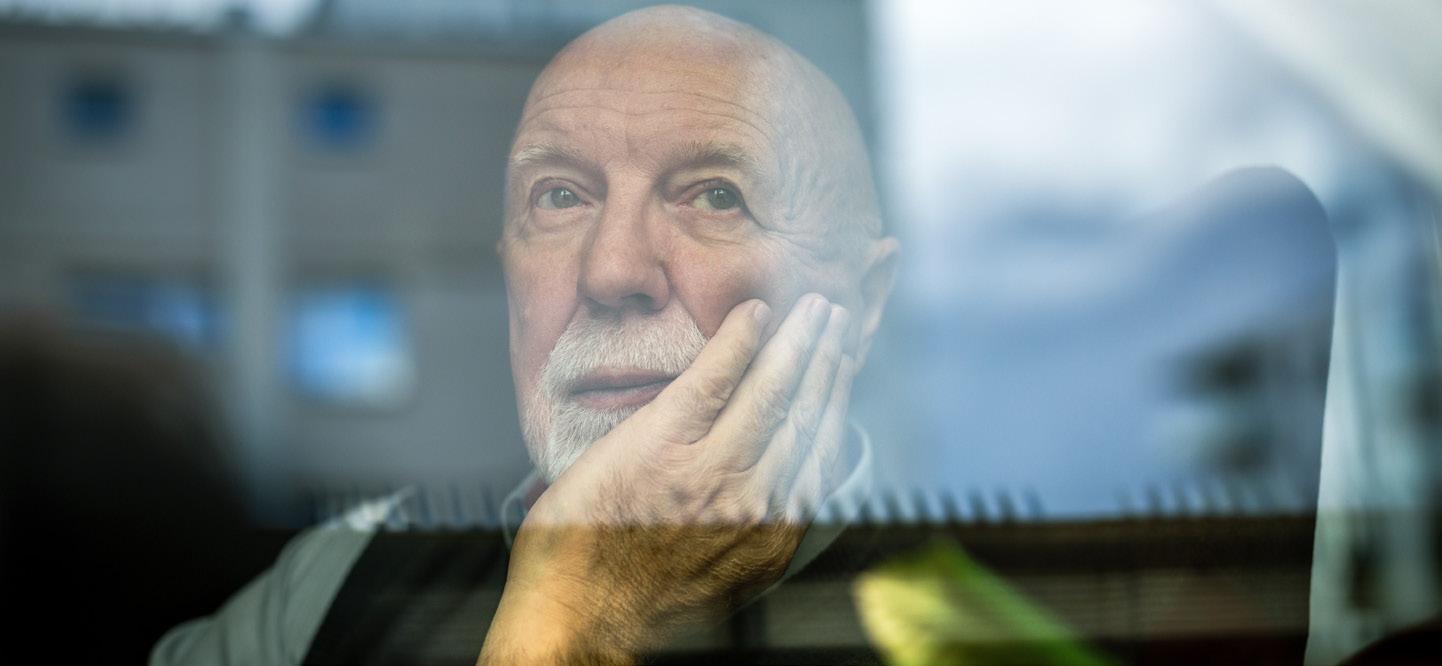



By Kristie Pfaff
Comedian Milton Berle said,
“You know you’re getting older when it takes more time to recover than it did to tire out.”
He was joking of course, but he was also onto something.
As we get older, there comes a point when we realize we need more help than we used to. For some of us, that's difficult to accept. No one enjoys having to rely on others for things we once did ourselves.
If you're the caregiver for an elderly parent or other relative, you may sense their frustration. It may even manifest as anger directed at you. In truth, it's most likely you are not the true cause of that behavior. Aging is a complex process; your loved one is going through changes over which they have little or no control. They may also be experiencing a physical or cognitive decline that can make them feel irritated, helpless and resentful.
How do you as the caregiver handle this?
As I tell the nursing staff I teach at St. Ann's Community, try putting yourself in the other person's shoes. Remind yourself of what they're going through and think about how you'd feel—and how you'd like other to respond—if that was you.
Let your loved one know you are not trying to belittle or patronize them or take away their independence. You care about them and want them to be safe while living in their own home for as long as possible. That's not a perfect answer, but it's a start.
There are also practical steps you can take to make the road smoother for both your loved one and yourself: Know their end-of-life wishes. Have a meaningful conversation about the medical care your loved one wants (and doesn't want) if they become seriously ill or unable to communicate. Put their preferences in writing with advance directives such as a living will, health care proxy and durable power of attorney. Your doctor's office, attorney, or local
office for the aging can assist with this.
• Stay up to date. Keep a current list of your loved one's medications and medical conditions. If you can't accompany them to their appointments, make sure you review the after-visit summary. Know the password for accessing the patient portal (MyCare, MyChart, etc.) used by the doctor's office which contains the patient's online medical records and other information.
• Be prepared. Know the medical supplies your loved one needs and how and when to order them. (Be aware: Not everything arrives overnight.) Think nebulizer, CPAP machine, oxygen equipment, blood sugar test strips, etc.
• Be proactive. Install nightlights, grab bars, hand railings, non slip stair treads, and other easily obtainable home-safety items to keep your loved one safe. Consider a personal emergency response system (wearable help button) that can be used to call for help in the event of a fall or other emergency.
As I tell my nursing students, being responsible for the care of our elders is one of the greatest gifts anyone can receive. Be conscious of that, and know you play a vital role in the life of a very special person. And if at any point the pressure of being a caregiver becomes too much, reach out to St. Ann’s Community — we have expert staff ready to walk you through the next steps into senior living.

Kristie Pfaff is a registered nurse and director of education at St. Ann's Community. She can be reached at kpfaff@mystanns. com.
Social Security helps you secure today and tomorrow with financial benefits, information and tools that support you through life’s journey. If you don’t have enough Social Security credits to get benefits on your own record, you may be able to receive benefits as a spouse. Your spouse must be receiving benefits for you to get benefits on their record. If your spouse does not receive retirement or disability, you’ll have to wait to apply on your spouse’s record.
In addition, to be eligible for spouse’s benefits, you must be one of the following:
• 62 years of age or older.
• Any age if you have a child who is younger than 16 in your care or has a disability and is entitled to benefits on your spouse’s record.
If you wait until you reach full retirement age to receive benefits, you’ll receive your full spouse’s benefit amount, which is up to one-half the amount your spouse receives. You’ll also get your full spouse’s benefit if you are under full retirement age, but care for a child and one of the following applies:
• The child is younger than age 16.
• The child has a disability and is
Q: My same-sex partner and I recently married. Will we be eligible for Social Security benefits?
A: You or your spouse could be eligible for benefits, or a higher benefit amount, based on your marital relationship. Many factors affect your eligibility for benefits, including how long you worked and your age. You can apply online at www.ssa.gov/ apply, by phone by calling 1-800772-1213 (TTY 1-800-325-0778), or contacting your local Social Security office. We encourage you to apply for benefits right away, even if you are not sure if you are eligible. Applying now will protect you against the loss of any potential benefits. Learn more about Social Security for same-sex couples by visiting www.ssa.gov/ people/lgbtq/couples.htm.
Q: I’m 17 and eager to start my first summer job, but my mother misplaced my Social Security card. How can I get another?
A: If you know your Social Security number, you may not need to get a replacement card to obtain employment. However, if a prospective employer requests it, you can get a replacement Social Security card by following the steps below. There is no charge for a Social Security card, but you are limited to three per calendar year and 10 replacement cards during
entitled to benefits on your spouse’s record.
If you receive retirement on your own record, we will pay that amount first. If your benefits as a spouse are higher than your own benefit, you will get a combination of benefits that equals the higher spouse’s benefit.
Consider this example: Sandy is eligible for a monthly retirement benefit of $1,000 and a spouse’s benefit of $1,250. If she waits for Social Security until her full retirement age, she will receive her own $1,000 retirement benefit. We will add $250 from her spouse’s benefit, for a total of $1,250 a month. Sandy only gets an additional spouse’s benefit because her own benefit is less than half her spouse’s full retirement age benefit. Want to apply for either your retirement or your spouse’s benefits or both? Are you at least 61 years and 9 months old? If you answer yes to both, visit www.ssa.gov/benefits/ retirement to get started today. Are you divorced from a marriage that lasted at least 10 years? You may be able to get benefits on your former spouse’s record. For more information, please visit our website at www.ssa.gov/planners/ retire/divspouse.html.
your lifetime. Your parent can:
• Use our online “Social Security Number Card” application at www. ssa.gov//number-card/replace-card and answer a few questions to find out the best way to apply. Your parent can start the application online and complete the process in a local Social Security office or card center, usually in less time.
• Fill out and print an “Application for a Social Security Card” if they are not able to complete it online.
• Take or mail your application and original or certified documents proving your identity to your local Social Security office or card center. For more information, read our pamphlet, Your Social Security Number and Card at www.ssa.gov/pubs/ EN-05-10002.pdf.
Q: I’m reaching my full retirement age and thinking about retiring early next year. When is the best time of year to apply for Social Security benefits?
A: You can apply as early as four months before you want your monthly benefits to begin. To apply, just go to www.ssa.gov/apply. Applying online for retirement benefits from the convenience of your home or office is secure and can take as little as 15 minutes. It’s so easy!

By Jim Miller
Dear Savvy Senior,
I need to hire a good in-home caregiver to help my elderly father who lives alone. What’s the best way to do this?
Searching Sarah
Dear Sarah,
Finding a good in-home caregiver for an elderly parent is not always easy. How can you find one that’s reliable and trustworthy, as well as someone your parent likes and is comfortable with? Here are some tips that can help.
Before you start the task of looking for an in-home caregiver, your first step is to determine the level of care your dad needs.
For example, if he only needs help with daily living tasks like shopping, cooking, doing laundry, bathing or dressing, a “homemaker” or “personal care aide” will do. But if he needs health care services, there are “home health aides” that may do all the things a homemaker does, plus they also have training in administering medications, changing wound dressings and other medically related duties. Home health aides often work under a nurse’s supervision.
Once you settle on a level of care, you then need to decide how many hours of assistance he’ll need. For example, does your dad need someone to come in just a few mornings a week to cook, clean, run errands or perhaps help him with a bath? Or does he need more continuous care that requires daily visits?
After you determine his needs, there are two ways in which you can go about hiring someone. Either through an agency, or you can hire someone directly on your own.
Hiring a personal care or home health aide through an agency is the safest and easiest option, but it’s more expensive. Costs typically run anywhere between $20 and $30 an hour depending on where you live and the qualification of the aide.
How it works is you pay the agency, and they handle everything including an assessment of your mom’s needs, assigning appropriately trained and pre-screened staff to care for her and finding a fill-in on days her aide cannot come.
Some of the drawbacks, however, are that you may not have much input into the selection of the caregiver, and the caregivers may change or
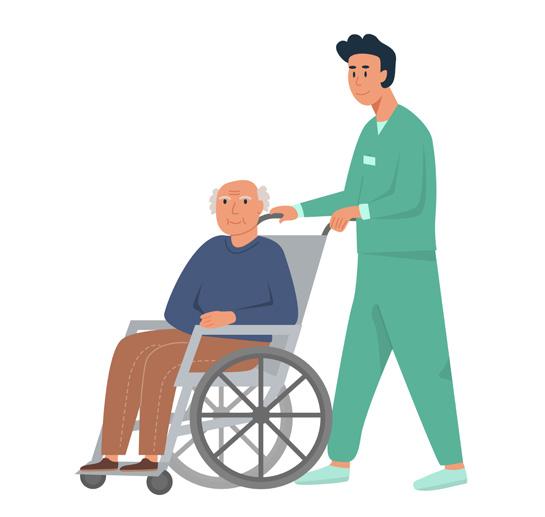
alternate, which can cause a disruption.
To find a home care agency in your dad’s area use search engines like Google or Bing and type in “home health care” or “non-medical home care” followed by the city and state your dad lives in. You can also use Medicare’s search tool at Medicare.gov/care-compare — click on “home health services.” Most home health agencies offer some form of non-medical home care services too.
You also need to know that original Medicare does not cover in-home caregiving services unless your dad is receiving doctor-ordered skilled nursing or therapy services at home too. But if your dad is in a certain Medicare Advantage plan, or is low-income and qualifies for Medicaid, he may be eligible for some coverage.
Hiring an independent caregiver on your own is the other option, and it’s less expensive. Costs typically range between $15 and $25 per hour. Hiring directly also gives you more control over who you hire so you can choose someone who you feel is right for your dad.
But be aware that if you do hire someone on your own, you become the employer so there’s no agency support to fall back on if a problem occurs or if the aide doesn’t show up. You’re also responsible for paying payroll taxes and any worker-related injuries that may happen. If you choose this option, make sure you check the aide’s references thoroughly and do a criminal background check at companies like eNannySource.com.
To find someone use an elder-care matching service like Care. com or CareLinx.com, which both provide basic background checks.
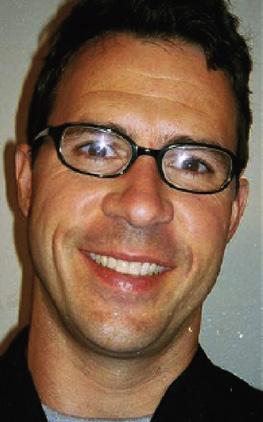
Send your senior questions to: Savvy Senior, P.O. Box 5443, Norman, OK 73070, or visit SavvySenior. org. Jim Miller is a contributor to the NBC Today show and author of “The Savvy Senior” book.
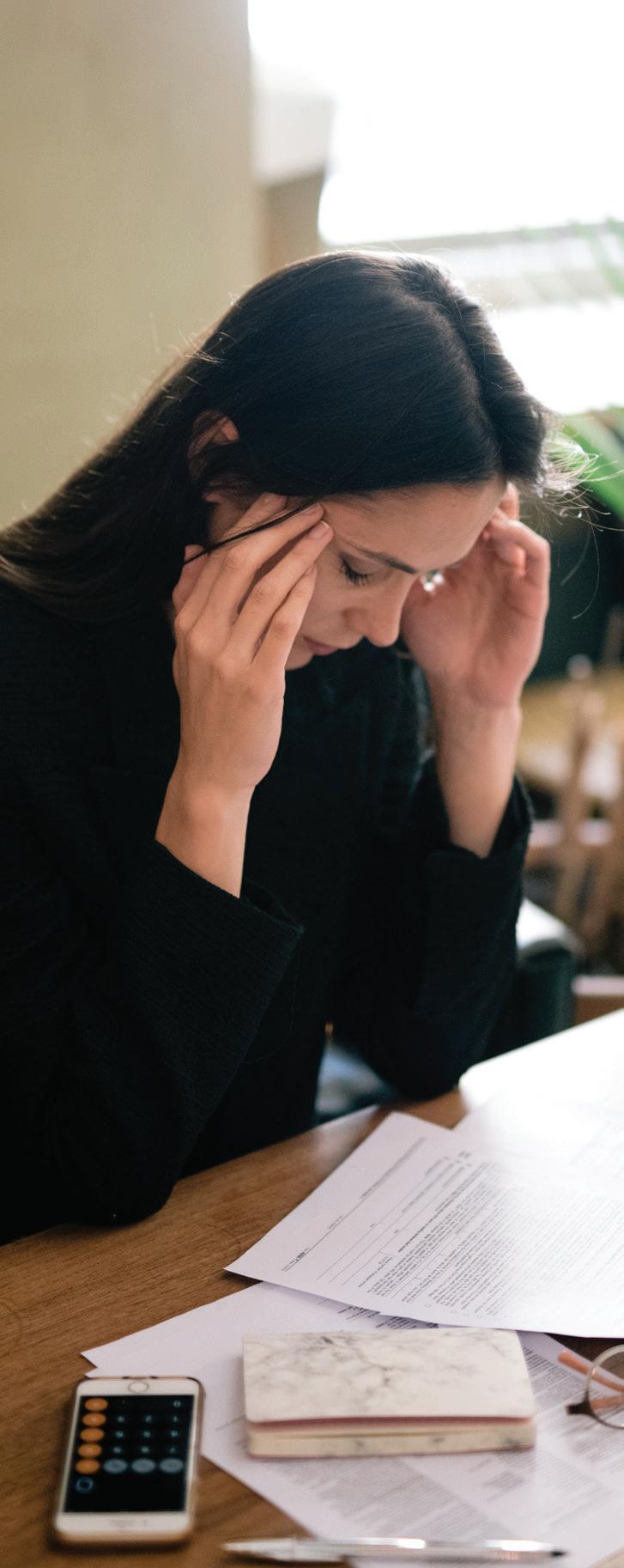
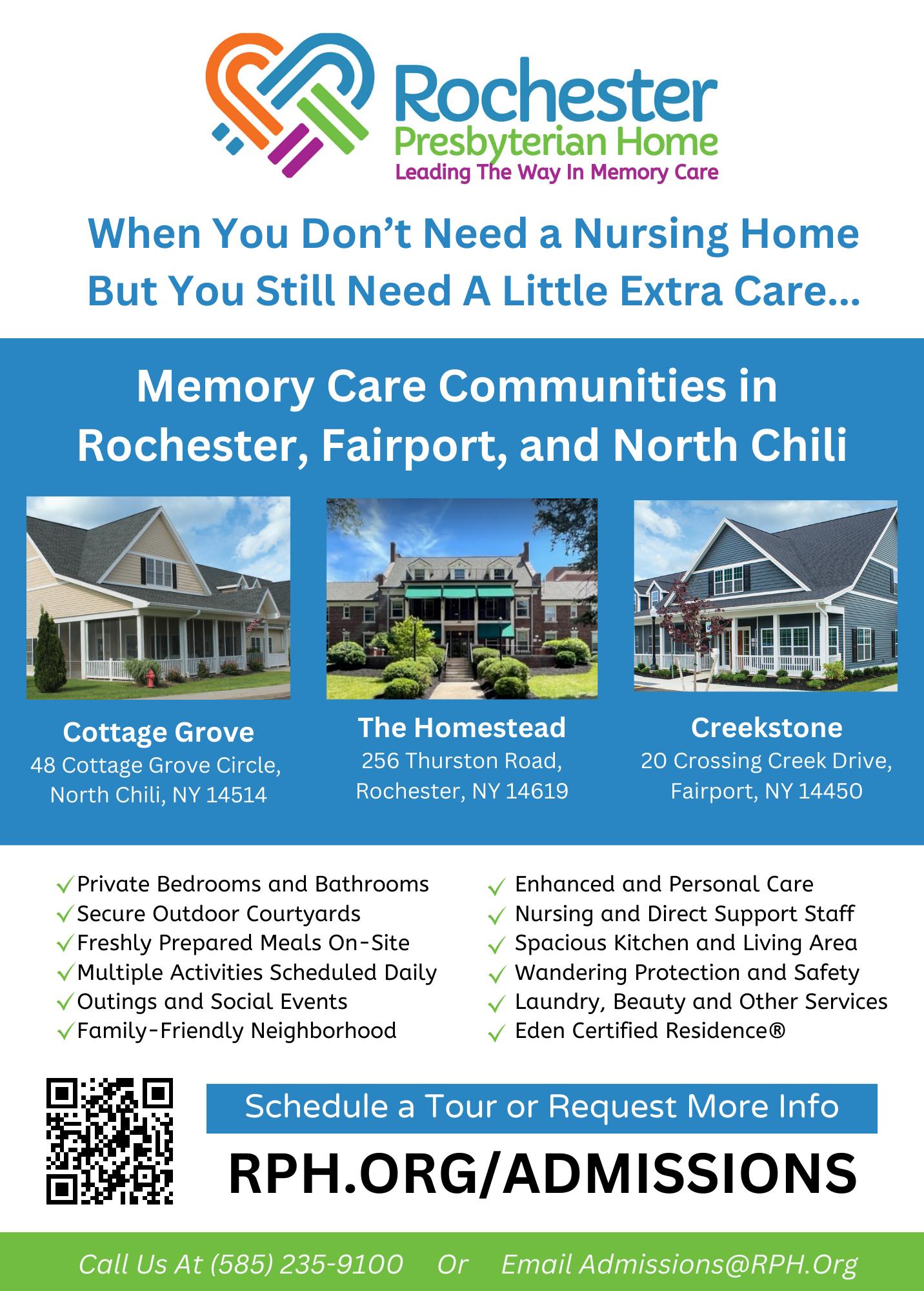
A family nurse practitioner with more than 20 years of experience recently joined Honeoye Family Practice.
Kimberly Schunk, a resident of Geneseo who is certified by the

American Nurses Credentialing Center, obtained her bachelor’s in nursing from Alfred University in Alfred and a master’s in education from Old Dominion University in Norfolk, Virginia. Her master’s as a family nurse practitioner came from the University of Rochester and early in her career, prior to relocating to Illinois, Schunk worked at Honeoye Family Practice for seven years. Most recently, she was with a clinic in Barrington, Illinois.
Honeoye Family Practice is affiliated with F.F. Thompson Hospital.
Jewish Home has received funding from The Sephardic Foundation on Aging to establish and support a new initiative aimed at addressing elder abuse in the greater Rochester community. This initiative builds upon the Jewish Home’s longstanding partnership with Lifespan to combat elder abuse in our region.
This grant will enable Jewish Home to deliver training for its 1,000 employees, enhancing the ability to serve residents and patients holistically and advancing Jewish Home’s person-centered model of care.
Lifespan’s educational training, resources and expertise will be utilized to refine and expand Jewish Home’s ability to identify, assess, and care for the older adults they serve who may be experiencing abuse.
“Elder abuse is a significant
problem in our region—and across the country—that all too often goes unreported and unrecognized. This initiative will allow us to better support our community by enhancing Jewish Home’s ability to address elder abuse among the people we are privileged to serve,” says Michael S. King, president and chief executive officer at Jewish Home.
“It is vitally important for our Rochester community to come together and address the pernicious problem of elder abuse. We are looking forward to our continued partnership with Jewish Home and this new opportunity to assist them in the education and training of their employees,” says Ann Marie Cook, president and chief executive officer at Lifespan.
Approximately one in 10 older Americans have experienced some form of elder abuse, with most cases going unreported. The majority of perpetrators are family members of victims, and two-thirds of them are adult children or spouses.
Highland Hospital has earned The Joint Commission’s Gold Seal of Approval® for Advanced Certification in Perinatal Care (ACPC) by demonstrating continuous compliance with its performance standards. The gold seal is a symbol of quality that reflects a healthcare organization’s commitment to providing safe and quality patient care.
The certification recognizes Highland’s efforts to achieve integrated, coordinated, and patient-centered prenatal through postpartum care, including for both complicated and uncomplicated pregnancies. The certification uses standards, guidelines, and The Joint Commission’s perinatal care measure set for managing and monitoring aspects of perinatal care that are critical to improving and maintaining the health of newborns and their mothers.
Highland Hospital Family Maternity Center's commitment to excellence was tested during a thorough and rigorous onsite two-day review
Two of New York’s leading nonprofit health care companies are teaming up to improve the quality, experience, and affordability of care for residents across the state.
CDPHP and The Lifetime Healthcare Companies, the parent company of Excellus BlueCross BlueShield and Univera Healthcare, in May announced plans to form an affiliation that will allow the health insurers to maintain their local brands and identities while gaining economies of scale through shared technologies, systems, processes, and resources as part of one corporate family.
If the affiliation is approved by
in April. The Joint Commission evaluated the hospital's compliance with various certification standards, underscoring the hospital's dedication to meeting and exceeding industry standards. The Joint Commission standards are developed in consultation with healthcare experts and providers, measurement experts, and patients.
Highland Hospital is one of 39 hospitals in the U.S. with the certification. Strong Memorial and FF Thompson hospitals, also UR Medicine affiliates, have this advanced certification.
“Advanced certification in perinatal care recognizes healthcare organizations committed to striving for excellence and fostering continuous improvement in patient safety and quality of care,” says Ken Grubbs, executive vice president of accreditation and certification operations and chief nursing officer, The Joint Commission.
Sherra M. Watson has joined
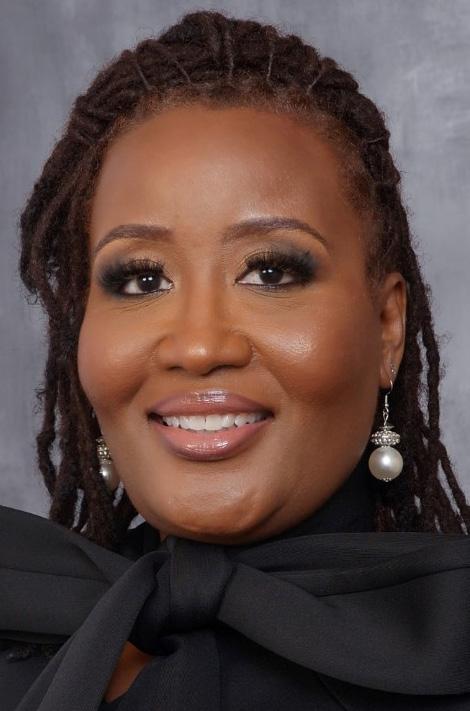
HCR Home Care as a registered nurse clinical educator and home health aide training program nurse instructor. In this role, Watson facilitates clinical-competency training for home health aides (HHAs). This training is part of HCR’s efforts to increase the Rochester area’s HHA and paraprofessional workforce. HHAs assist with medical tasks and provide personal care to patients in their homes.
Watson brings to the position more than 20 years of experience as a licensed practical nurse and as a professional registered nurse. Previous positions before joining HCR included serving as director of nursing at Penfield Place, as hospice and palliative care nurse case manager at Rochester Regional Lifetime Care, and as nurse manager-registered professional nurse at Episcopal Senior Life Community.
Watson earned a bachelor’s degree in nursing from Roberts Wesleyan University and an associate degree in applied science, nursing,
from Genesee Community College. She is a resident of Greece.
For the fourth consecutive year, Excellus BlueCross BlueShield was named to the Best Places to Work for Disability Inclusion. Excellus BCBS received a top score of 100% on the 2024 Disability Equality Index, a national benchmarking survey by Disability:IN and the American Association of People with Disabilities (AAPD).
The Disability Equality Index is a comprehensive benchmarking tool that helps companies with 500 or more employees build a roadmap of measurable, tangible actions that they can take to achieve disability inclusion and equality. Each company receives a score, on a scale of zero to 100, with those earning 80 and above recognized as a “Best Place to Work for Disability Inclusion.”
“We push ourselves to be better and do better, while recognizing there is always more to do. We continue to enhance inclusive and accessible experiences for our employees, members, and the communities we live in and serve. Being named a Best Place to Work for Disability Inclusion is a testament that our efforts are having a positive impact,” said Sady Alvarado-Fischer, vice president, diversity, equity and inclusion officer for Excellus BlueCross BlueShield. “Our continued application to the Disability Equality Index enables us to learn, identify opportunities for positive change and combat stigma and biases. We are proud of this designation and the dedication, passion, and work of so many throughout our organization that it represents. Together we make a difference.”
The Disability Equality Index is a joint initiative of the AAPD, the nation’s largest disability rights organization, and Disability:IN, the global business disability inclusion network, to collectively advance the inclusion of people with disabilities. The Disability Equality Index Advisory Committee, a diverse group of business leaders, policy experts, and disability advocates, developed the Disability Equality Index. Learn more at: DisabilityEqualityIndex.org.
state and federal regulators, The Lifetime Healthcare Companies would become the parent company of CDPHP, Excellus BCBS and Univera Healthcare.
“As we celebrate 40 years of CDPHP delivering high-quality, affordable health care — and as I mark 16 years of leading this great organization — it gives me tremendous pride to announce our plans to partner with The Lifetime Healthcare Companies,” said CDPHP president and CEO John D. Bennett. “It was important for us to partner with a not-for-profit health plan that shares in our mission of driving better health outcomes, increasing mem-
ber satisfaction, and controlling the rising cost of care in the combined communities we serve.”
CDPHP, Excellus BCBS and Univera Healthcare are nonprofit, mission-driven organizations whose names are synonymous with quality, according to a new release. “Working together, they will combine resources, leverage best practices, and develop new and innovative ways to improve the quality, affordability, and experience of care for millions of New Yorkers. If the affiliation receives regulatory approval, each plan will remain local and highly responsive to the unique needs of their respective communities,” according to the news release.
“I’m excited to partner with CDPHP to work together on quality, affordability, and access to health care in our respective regions,” said
Jim Reed, The Lifetime Healthcare Companies president and CEO. “I have a tremendous amount of respect for the reputation CDPHP has built in the Capital Region and the work of the health plan. It just makes sense to partner with such a trusted, mission-driven not-for-profit whose culture aligns so closely to ours.”
CDPHP and The Lifetime Healthcare Companies have announced their intent to affiliate with the appropriate government agencies. The boards of directors of CDPHP and The Lifetime Healthcare Companies unanimously approved the affiliation.
While the plans await regulatory approval, services will continue as usual for members, providers, employers, and strategic partners.



•
•



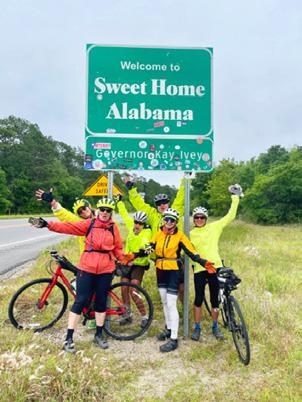
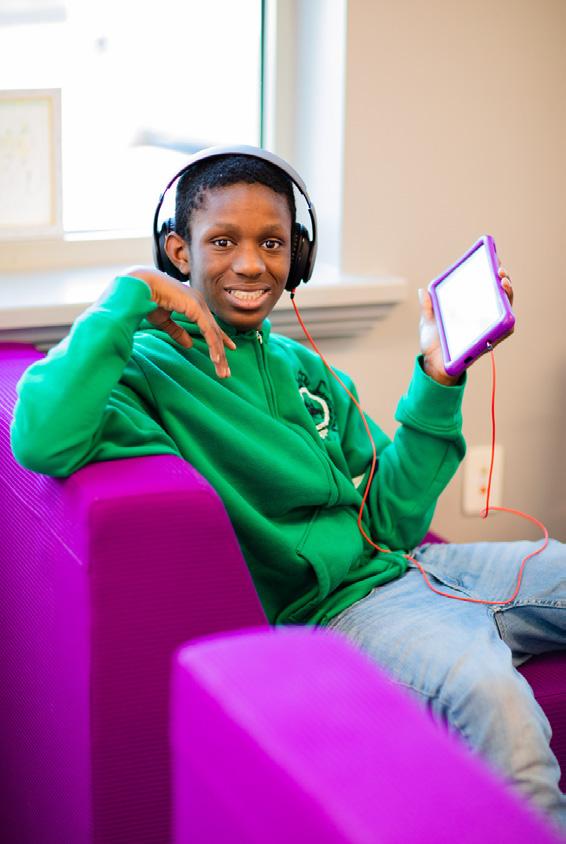


SELECT STORIES IN THE NEW ISSUE OF 55 PLUS
• Celebrity —TV legend Don Alhart signs off
• Aging — Healthful aging isn’t just up to chance. A conversation with an URMC expert
• Your Health — Turnng 55? Here are the tests your doctor will ask you to get
• Wellness — Meet the ‘Fantastic Four’ at RIT wellness program
• On the Water — Meet the team at Corn Hill Waterfront Navigation Foundation
• Staycation — No plans for this season? Try these staycation ideas | The ultimate road trip: take Route 5 and 20
to 55Plus, the
• Pickleball — Pickleball at Dinkers, Rochester’s largest pickleball facility
• Grandkids — Recreation and activities you can enjoy with grandkids
• Music — Host of WXXI’s midday classical music program, Julia Figueras reflects on 40-plus-year career
• Profile — Ann Mitchell jazzed about music
• Collecting Social Security at 62 and very happy about it ...and so much more!
